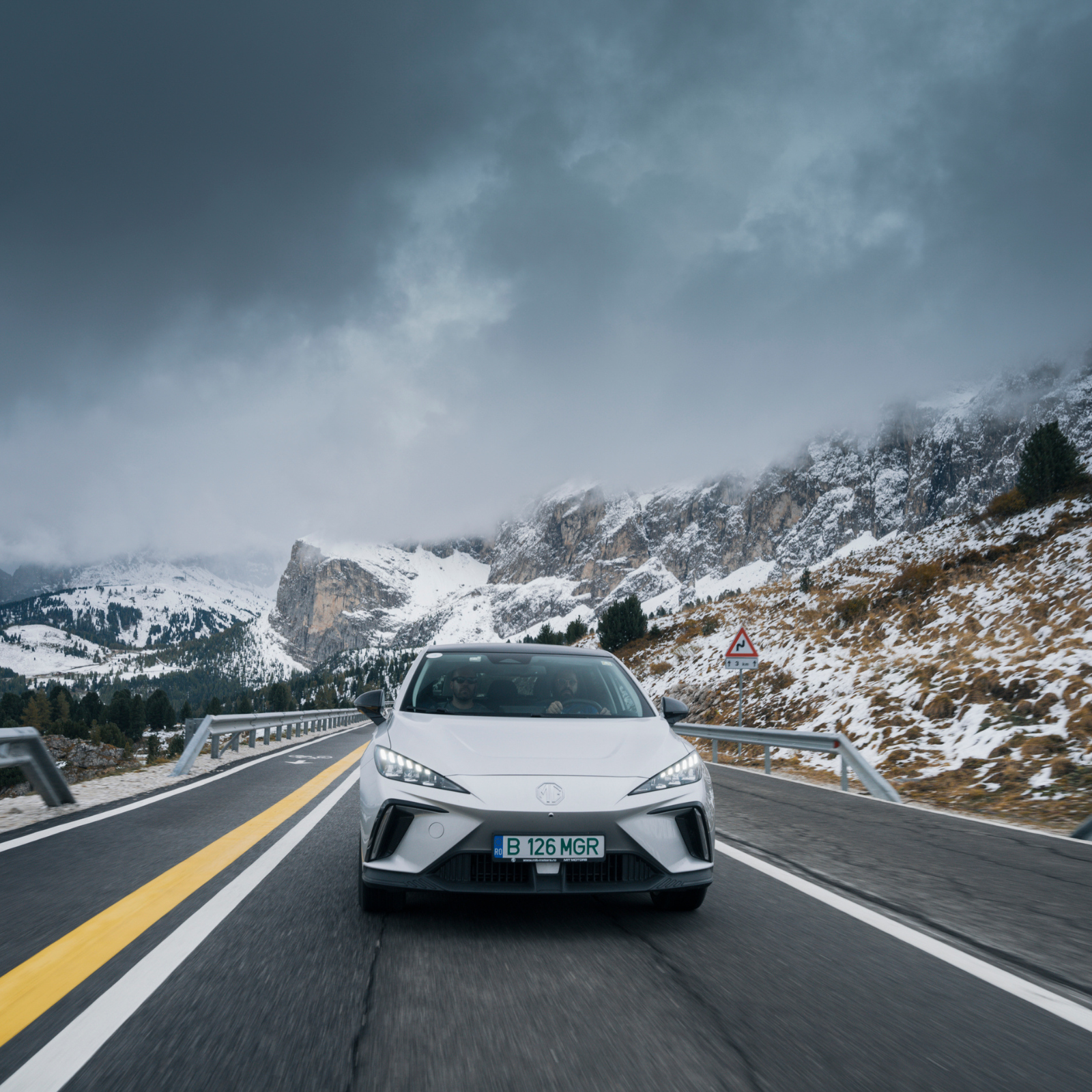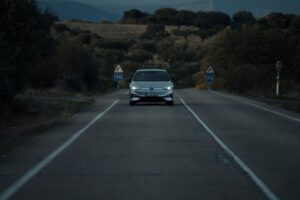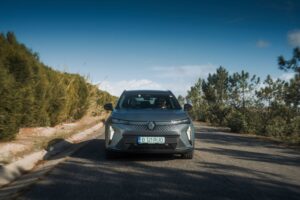The MG4 is a compact-class hatchback offered only in an electric version. The model is developed by SAIC Motor specifically for the MG brand it owns, and is not a collaboration with another manufacturer or the renaming of an existing product in another range. The model arrived on the Romanian market at the end of last year – with the return of the MG brand in our country – and during the 16-day EUROCHARGE tour from Bucharest to Lisbon and back, we tested a model equipped with the largest battery currently available in the range (77 kWh) and an electric motor with 245 hp.
Below you’ll find full details of the actual range, actual consumption, charging costs and how much time we spent at the stations.

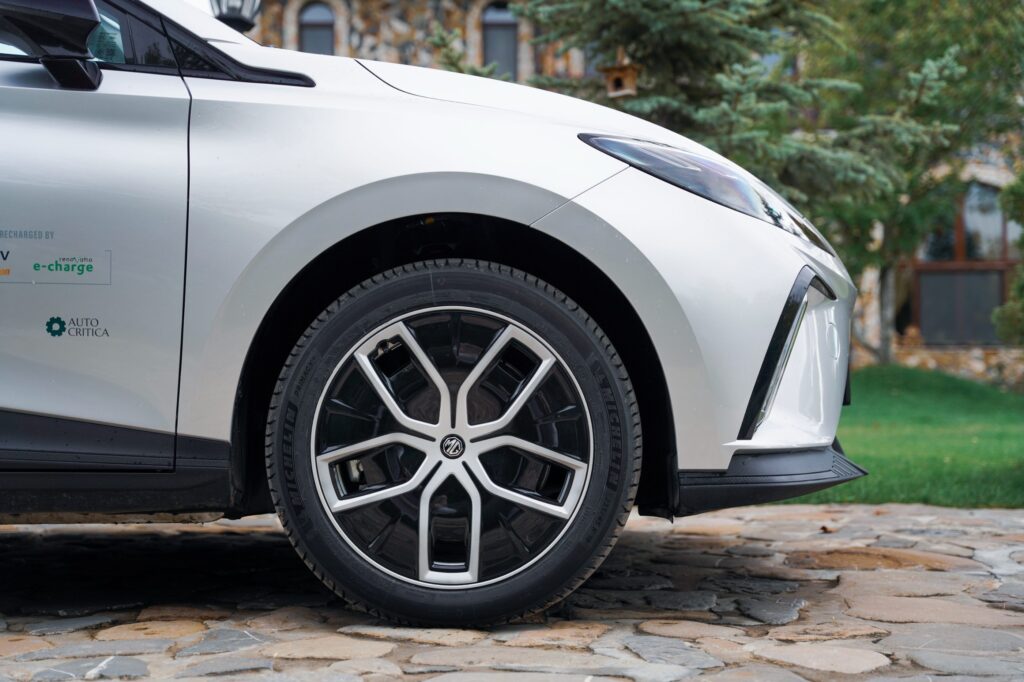
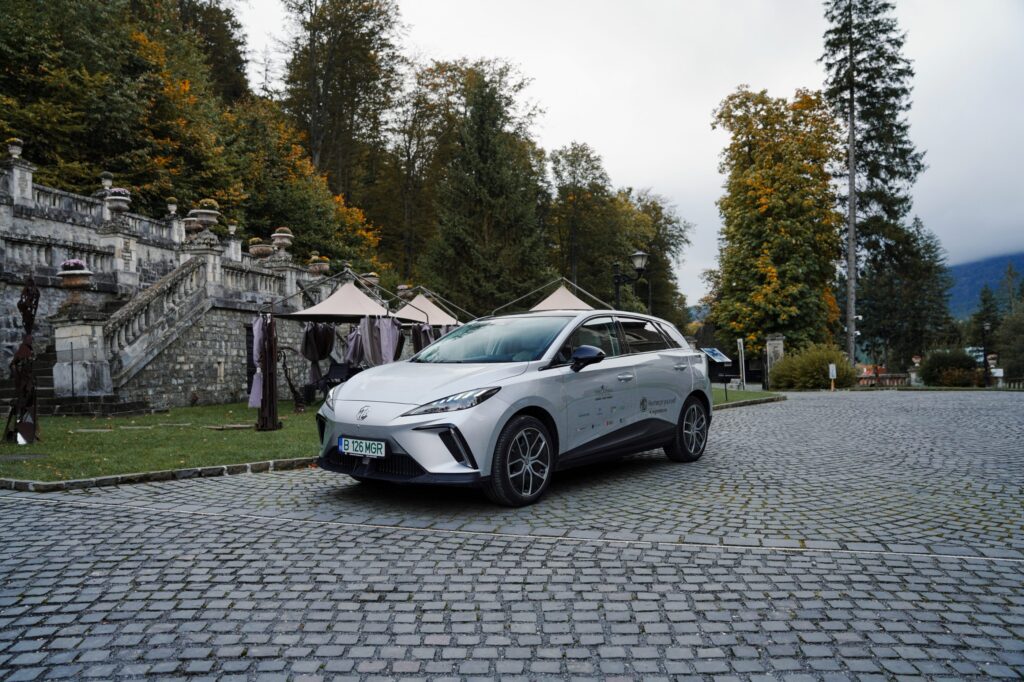
MG4: energy consumption, actual range, charging costs
The average cost per kWh is between €0.39 – €1 and the average cost per kilometer is between €0.1 – €0.19. The costs are given as a range as they vary depending on the application used/subscription of each user.

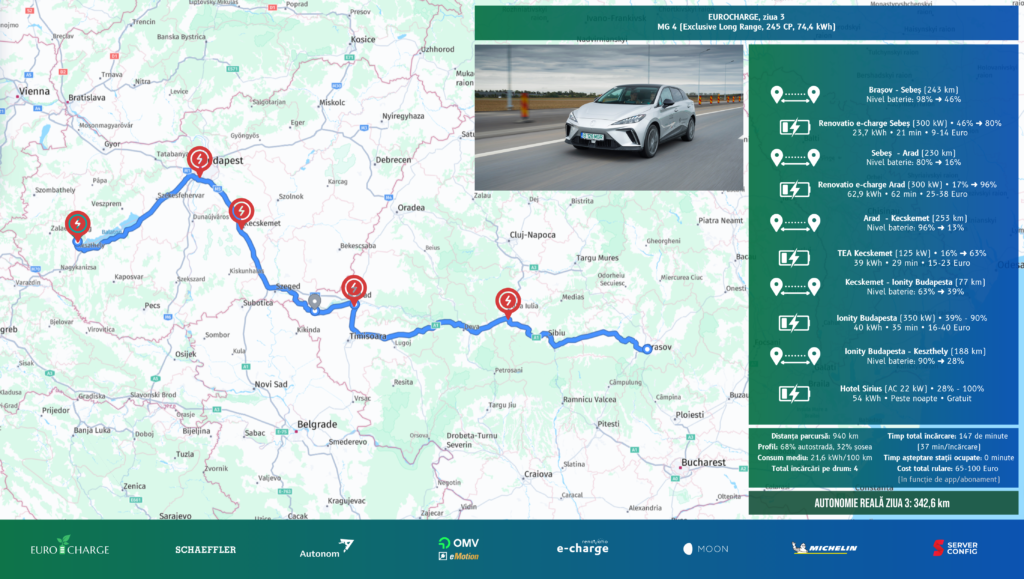
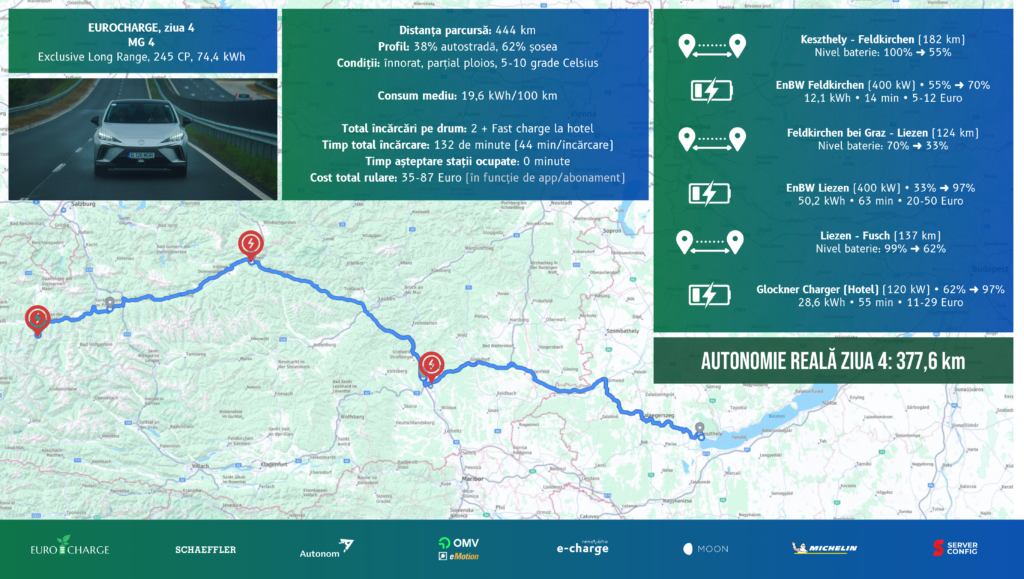
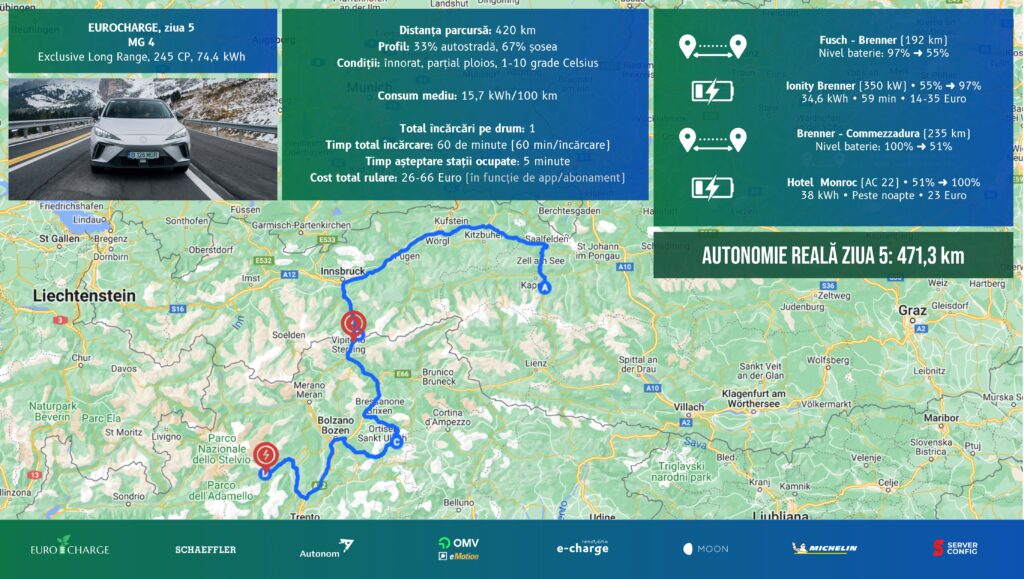
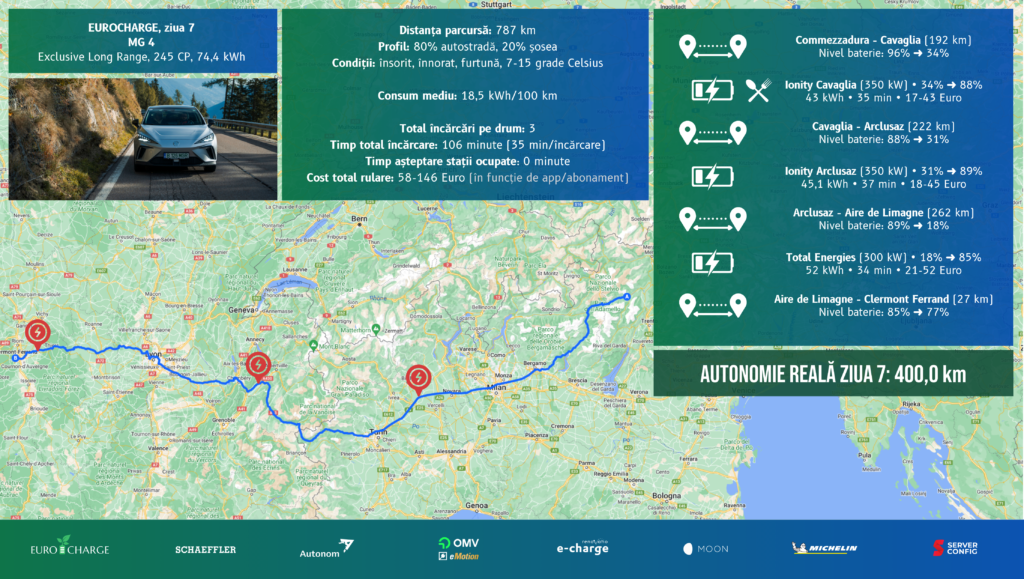
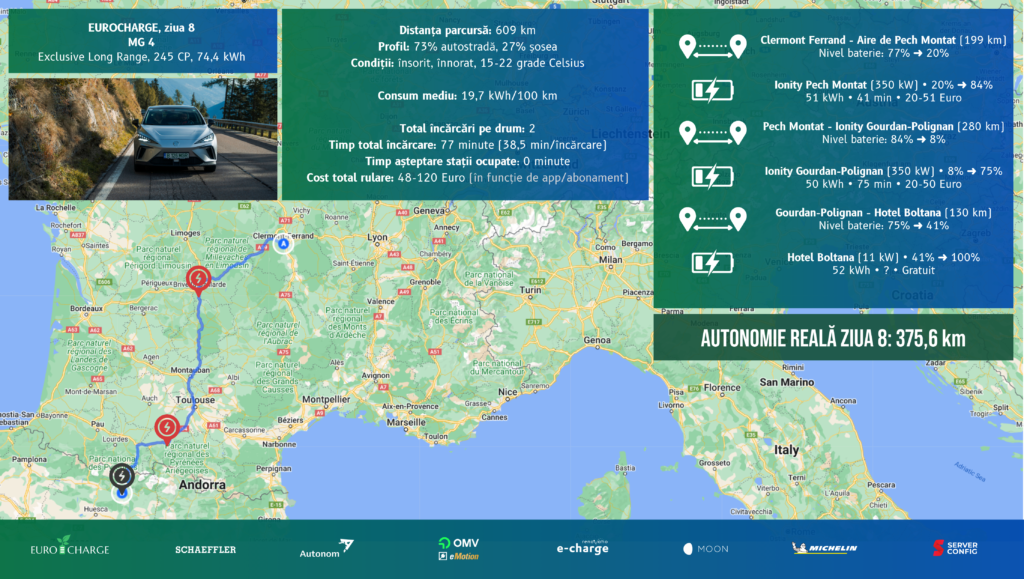
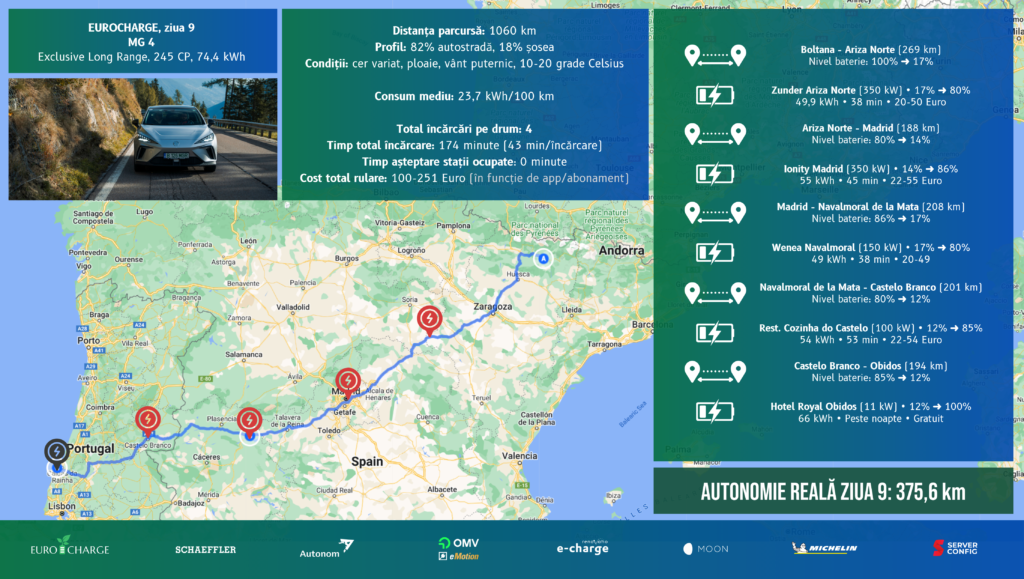
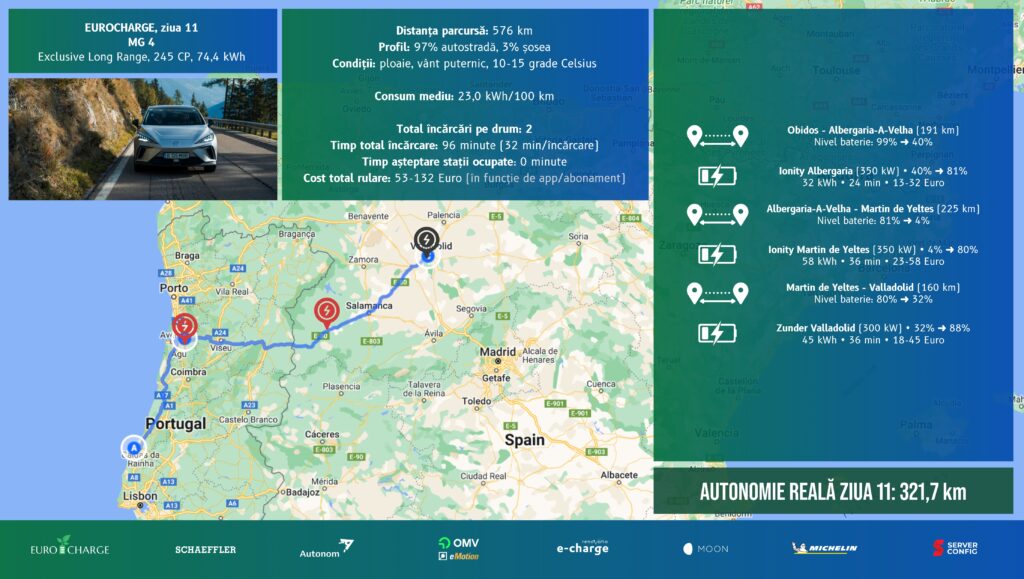

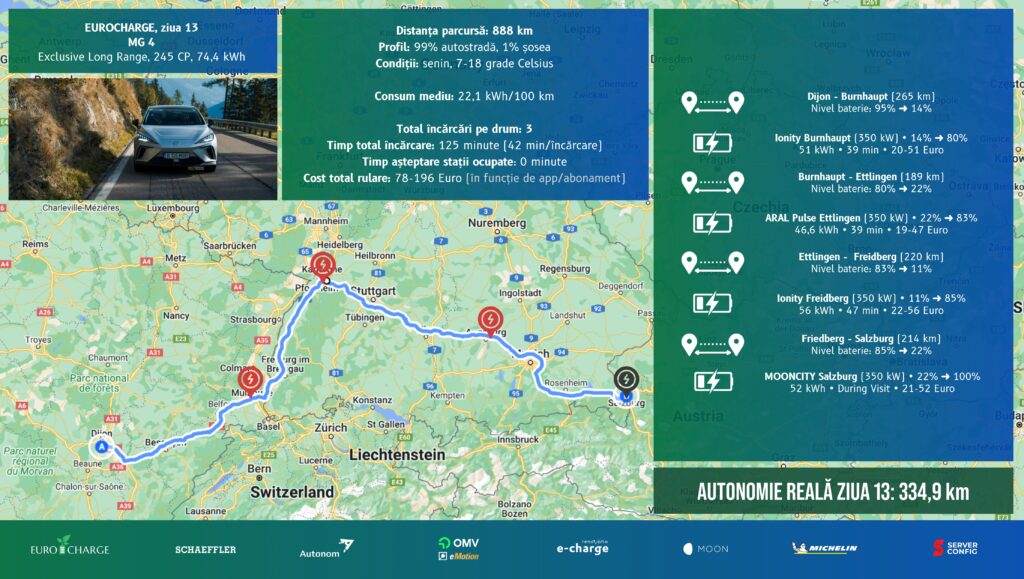
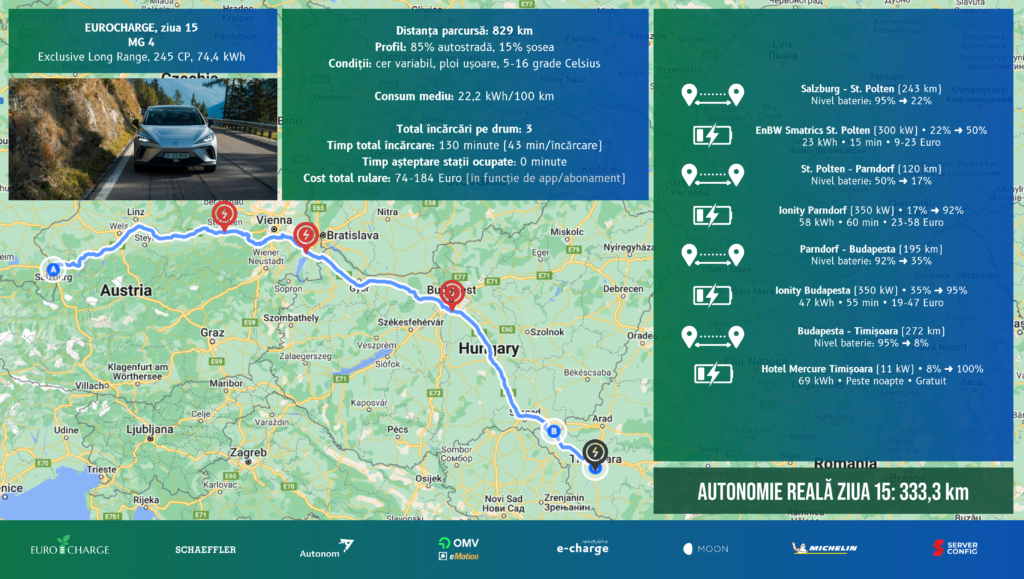
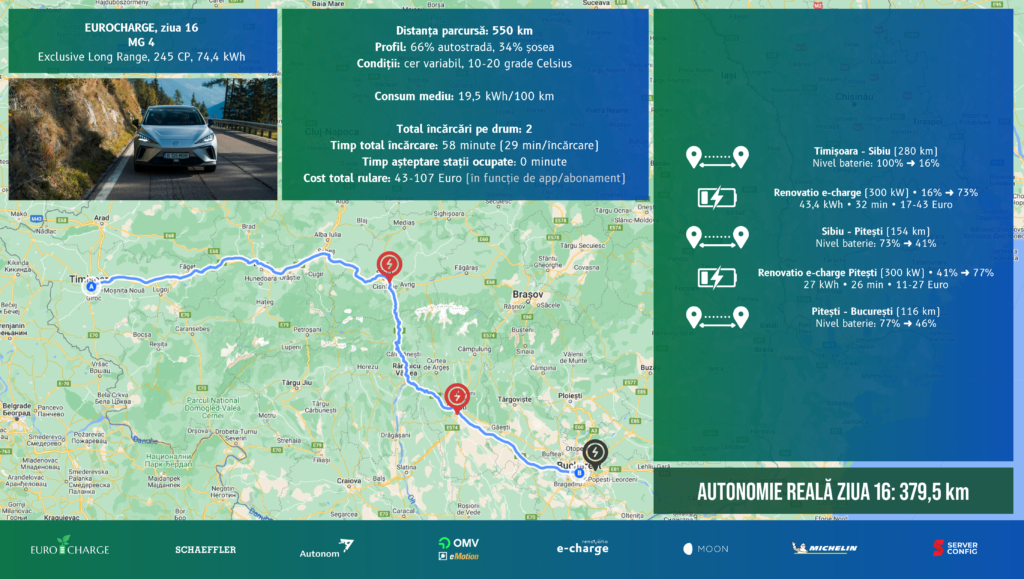
Impressions of those who drove the MG4 in EUROCHARGE by Schaeffler
Bogdan Grigorescu (Autoexpert)
Because it’s good in life to do things in order, I set off on the EUROCHARGE adventure behind the wheel of the most affordable car in the group, the MG4. The base version with a 51 kWh battery starts at €28,900 (€23,900 through Rabla Plus), while my 77 kWh model costs €41,010 (€36,010 through Rabla Plus), because the whole range is discounted by €2,500. In short, it’s the cheapest car in the EUROCHARGE and, dare I say it, the most agile. The 245bhp at just 1826kg, the lightest weight in the group, combined with rear-wheel drive and a more heavily tuned multilink rear suspension, feels exhilarating in corners.
If you’re not interested in the sporty side of things, but you’re looking for autonomy, you should know that in Bucharest, when the temperature allowed me not to use the air conditioning system, it consumed 13 kWh/100 km, equivalent to a range of 572 km, but when air conditioning and extreme congestion entered the equation, consumption went up to 17 kWh/100 km (437 km). Between Snagov and Brasov (510 m positive difference in level, or, if you like, on a hill), with about 40 km of highway followed by the DN1, with the heating on in the passenger compartment, the consumption was 19.1 kWh/100 km, equivalent to a range of 389 km.
What did I like the most? The One Pedal system, which works flawlessly, bringing the car to a complete stop when the accelerator is released. Simply put, it’s addictive in city traffic. Then the two customizable buttons on the steering wheel. I’ve paired them with two vital functions for energy consumption: driving modes and energy regeneration level. Where else is there work to be done? On the multimedia system, which requires too many “button presses” to adjust climate settings when using Android Auto, which, by the way, is only activated via USB cable. Oh, and the brake pads and brake disks, which squeak extremely loudly at low speeds.
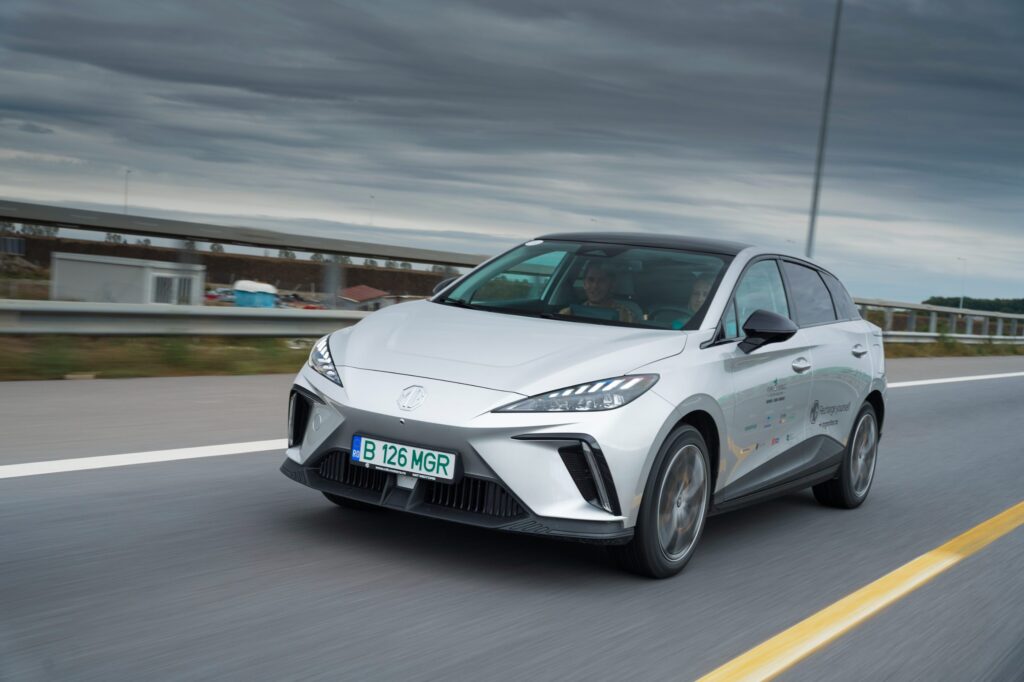
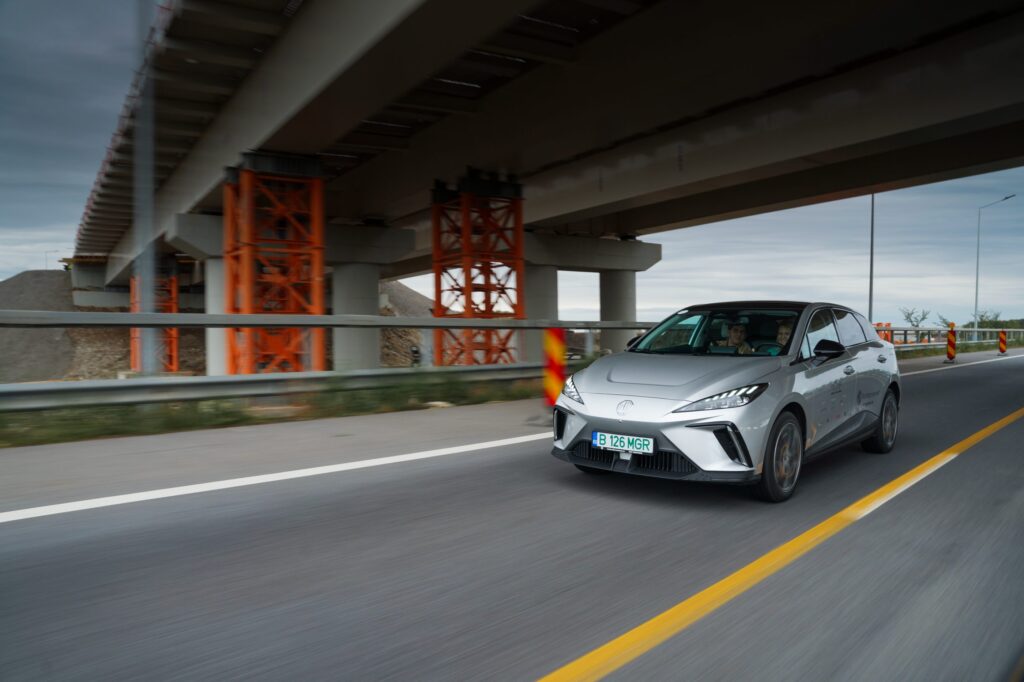
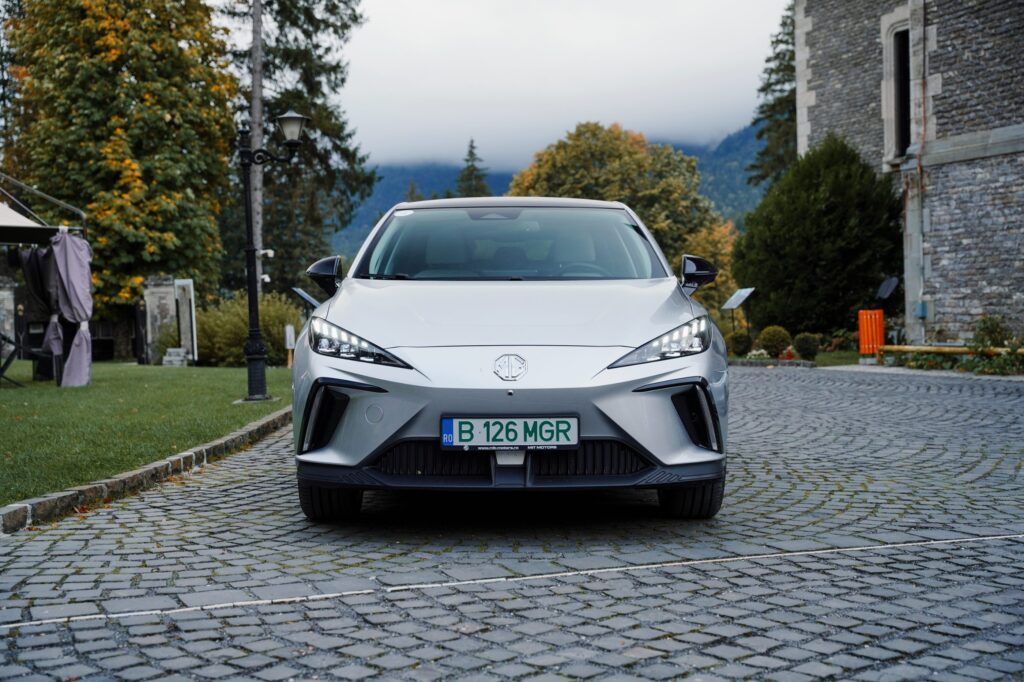
Radu Tudoroiu (Digital Storyteller)
Getting into the MG4 on a gloomy, gray-sky, rainy day is somewhat contraindicated. As soon as you open the door, you’re confronted with light-colored materials, an unexpectedly generous interior space and a good driving position.
The on-road handling is interesting, perhaps a little too “fussy” with the lane assist and adaptive cruise control braking systems, but otherwise it was a pleasure to navigate, especially as the multifunction steering wheel helps you make a lot of settings very easily. In terms of range, the MG4 doesn’t disappoint, even if it does have a fuel consumption that seems like a big idea for the overall size and power of the car.
Austrian motorways and 500 kilometers today in very dog-like weather was a perfect opportunity to test the comfort of the seats on the long haul and how much fatigue they accumulate. Short answer: the seats take you in your arms and you get off relaxed after a round of driving and fatigue was minimal.
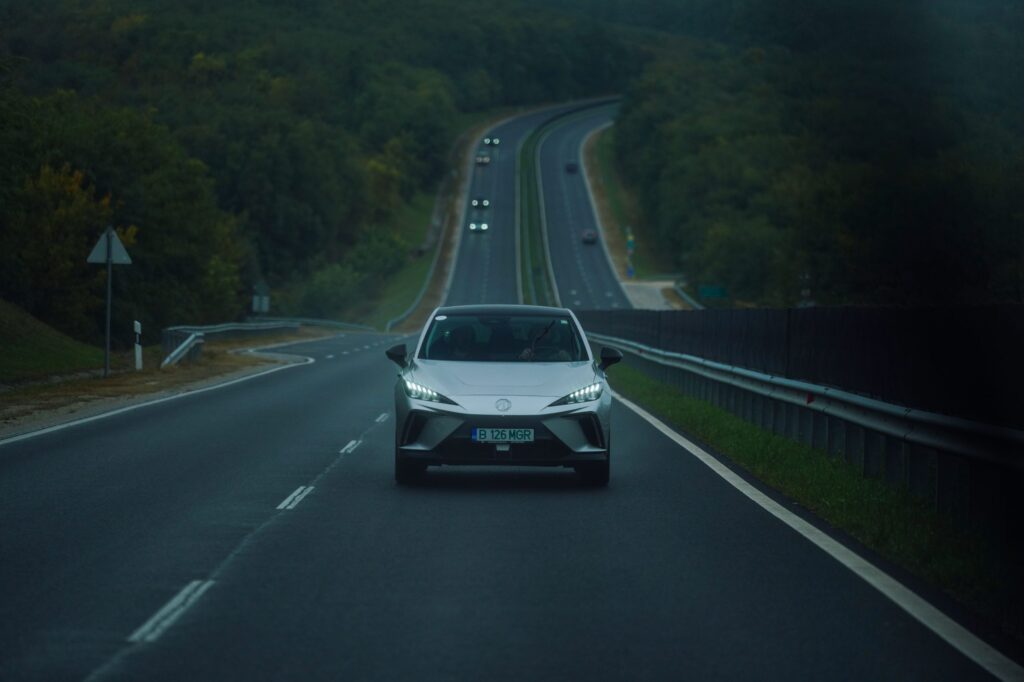

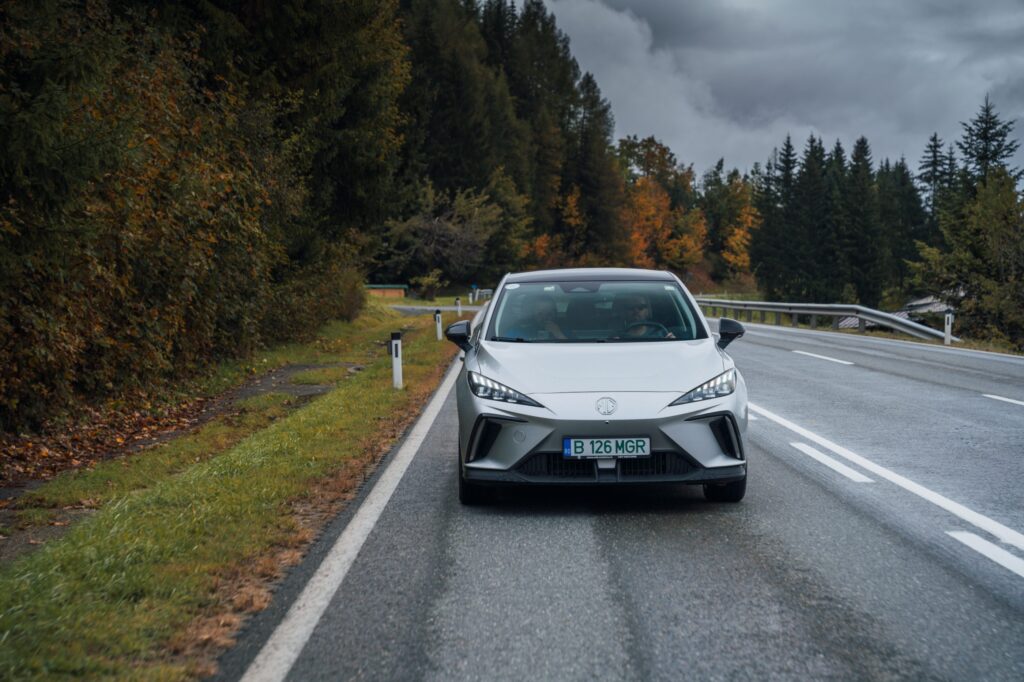
Tiberiu Buzdugan (electromobilitate.com)
Until Eurocharge, I’d never gotten into an MG model. All I knew about the brand was that it was very popular in the UK and that for more than 10 years the cars have been made in China. Recently, they’ve also appeared on the Romanian market, gaining market share mainly thanks to the thermal variants, which are very competitively priced.
MG4 is developed on a platform designed from scratch for electric cars, called MSP (Modular Scalable Platform). The main advantages are equal mass distribution between the two axles and a very low center of gravity. When driving, this translates into agile handling, making every corner a pleasant experience. From the very first corners on the Austrian Alpine country roads, I was surprised how responsive the suspension was. Although comfortable, it holds the car well on the road, without a feeling of roll.
Inside, I liked the seats, which I found even a little more comfortable than the Ioniq 6, even though they had no lumbar adjustment. After 6 and a half hours on highways and mountain roads, I felt fresh, with no neck or back pain. The storage spaces are generous and well thought out, with plenty of room between the seats, under the armrest and in the doors. The quality of interior materials is above expectations for a car in its class. Although many surfaces are plastic, the areas you normally touch are pleasant and feel durable. Trunk space is small, but that’s to be expected for a car in this class.
Adaptive cruise control takes a little getting used to, but after a few hundred miles you start to anticipate what it’s going to do. It has small shortcomings, such as braking unnecessarily in curves without traffic or reacting too cautiously when cars in front of you touch your lane. However, in difficult weather conditions (heavy rain, fog and darkness), it detected the pavement markings very well and held its lane exemplary. I also appreciated the headlights which, although not adaptive, matrix LED or other “modern” stuff, beat quite well and without disturbing other cars in traffic.
One notable minus is hiding climate controls in the infotainment screen, an irritating trend that more and more manufacturers are following. When using Apple CarPlay or Android Auto, having to navigate through multiple menus to adjust the climate control is impractical and goes against any idea of considerate driving.
Although the MG4 is compact in size, it’s quite heavy and not very efficient, but the large 77 kWh battery provides a decent range (over 300 km on the highway and over 400 km on national roads). The charging speed is not at the level of other 2024 electric cars, but for daily use or shorter trips, this won’t be a major issue. Of all the variants available, the single-motor model with the 77 kWh battery (the one we tested) seems to me to be the most suitable as an all-round car.
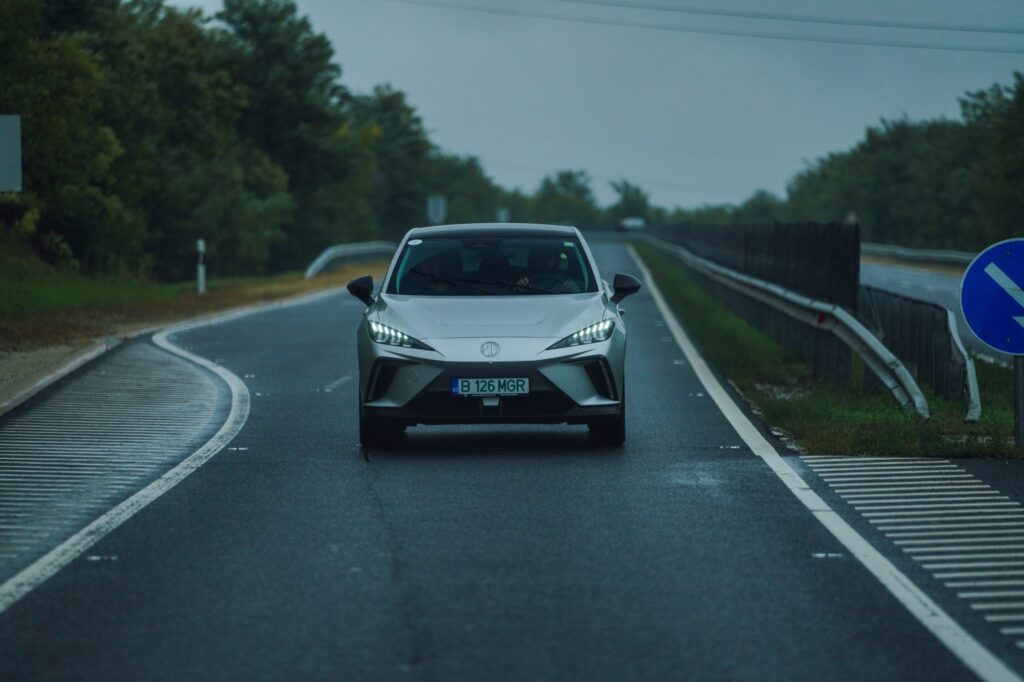
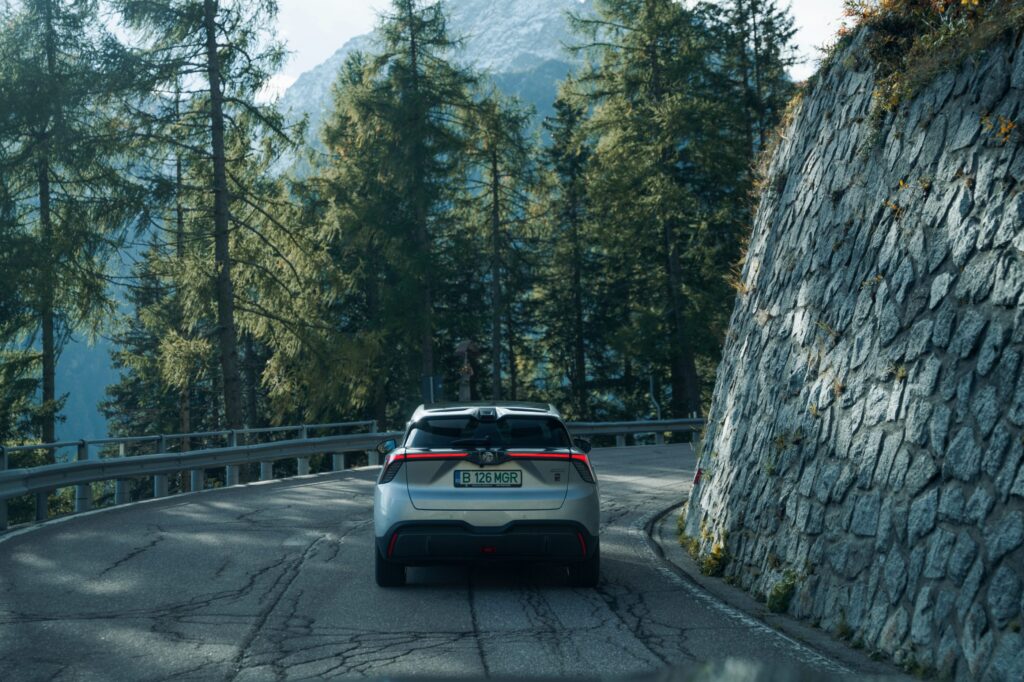

Andrei Barbu (MotorVlogTV)
The fact that the MG 4 is the cheapest car on the tour is no surprise. But the fact that it starts at around 28,500 euros is a surprise. Because, in the context of this list price, the MG 4 becomes a sobering proposition.
It’s not all Ionity roses, however, as the MG 4 still has a few things to sort out. First, the multimedia/infotainment system that you control via the center screen responds to touch controls about 75% of the time. The climate system has its own standard for Celsius and measures it differently to what we know. In fact, the whole climate control operation is tedious to say the least. And there’s that kind of hassle.
But MG could, in theory, solve all these problems with a software update. What can’t be fixed in software doesn’t really need fixing.
The suspension is well-calibrated, the anti-shock is good and the on-road experience is a pleasant one, with a lot of emphasis on comfort. Of course, through mountain passes and twisty roads this wouldn’t be your first choice. But as long as you don’t get out of the car too tired after a 500-mile drive, I’d say the setup is good.
On the other hand, if you choose an MG 4, you choose it primarily because you want an affordable electric car and everything else takes a back seat. The “test” in EUROCHARGE, on days with many hundreds of kilometers on the highway may not give the MG 4 an advantage over other cars. Because of the charging power and slightly higher than ideal fuel consumption. But as long as you’re using the car for short and medium trips, I don’t see why you wouldn’t seriously consider the MG 4. It’s far from perfect, but not that far if you factor in the 28k list price.
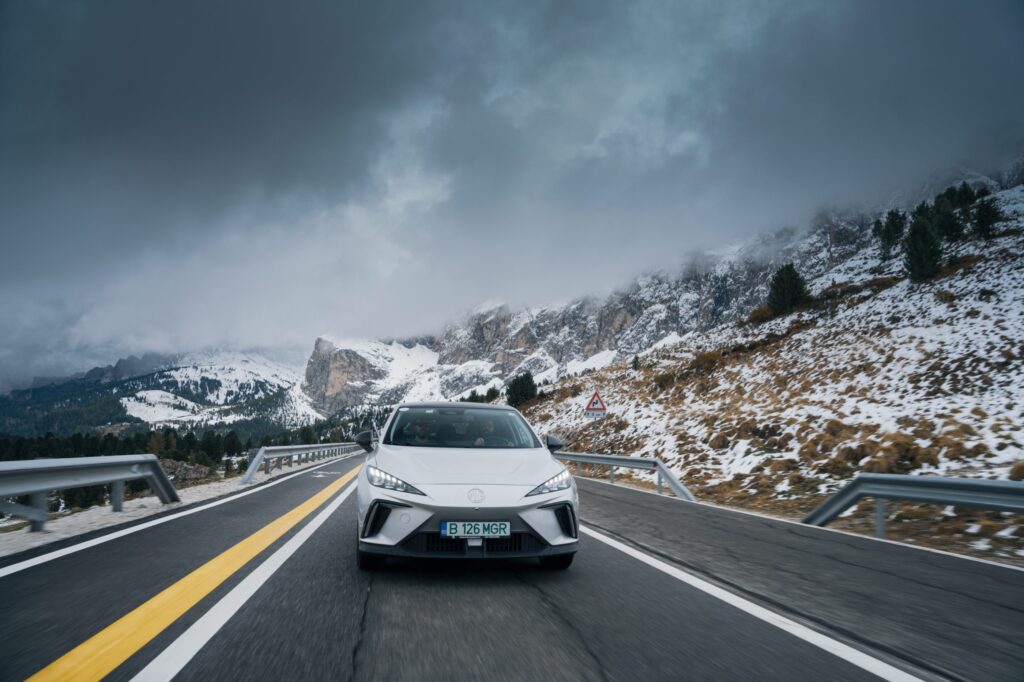
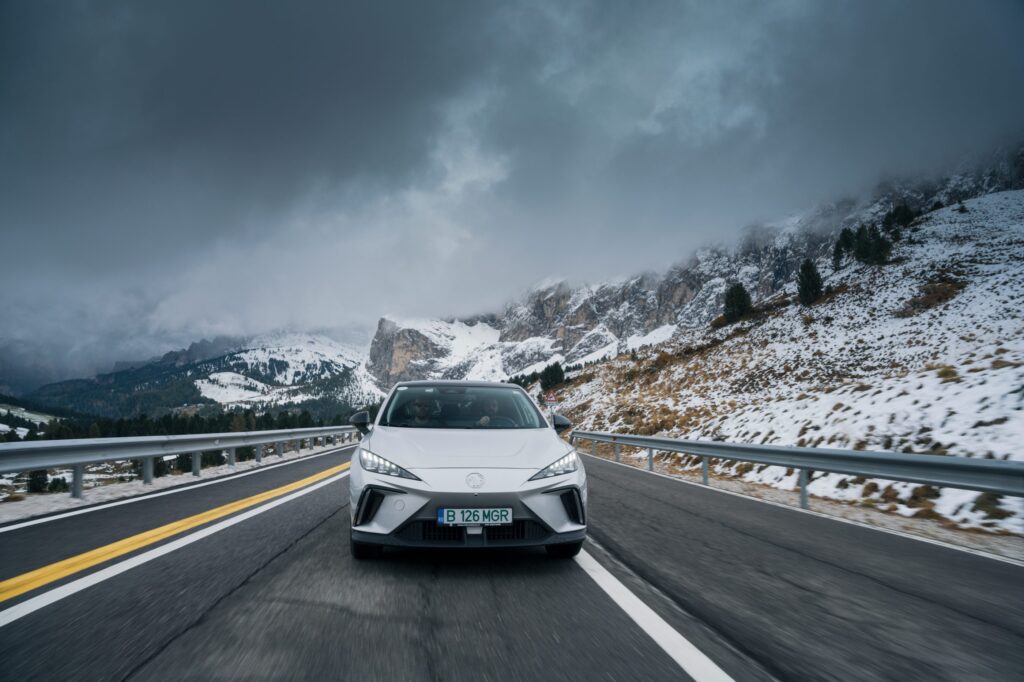

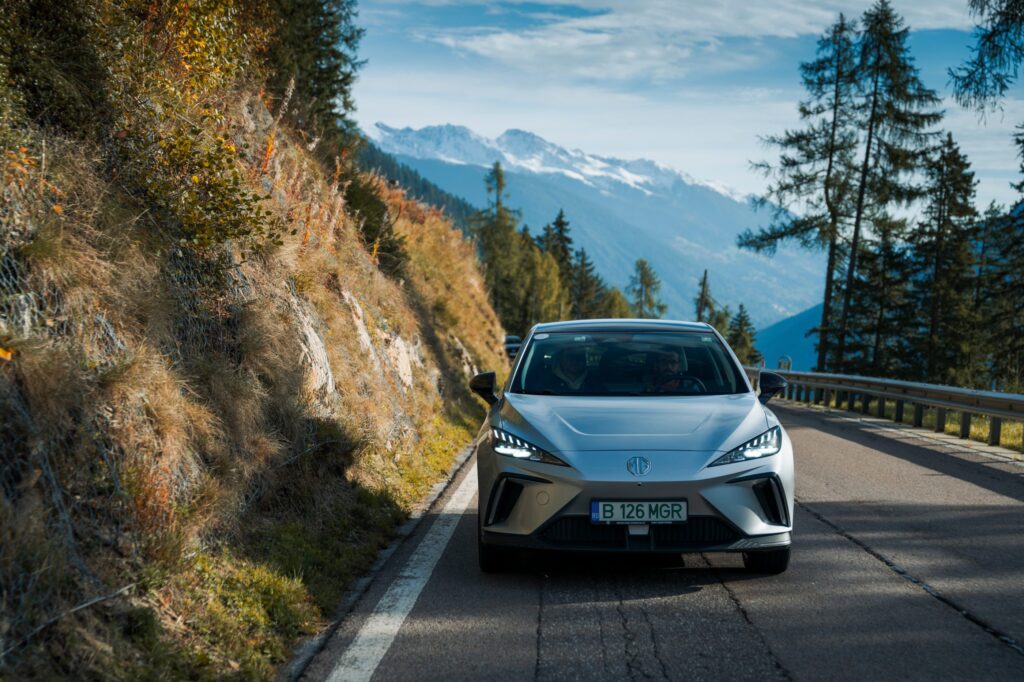
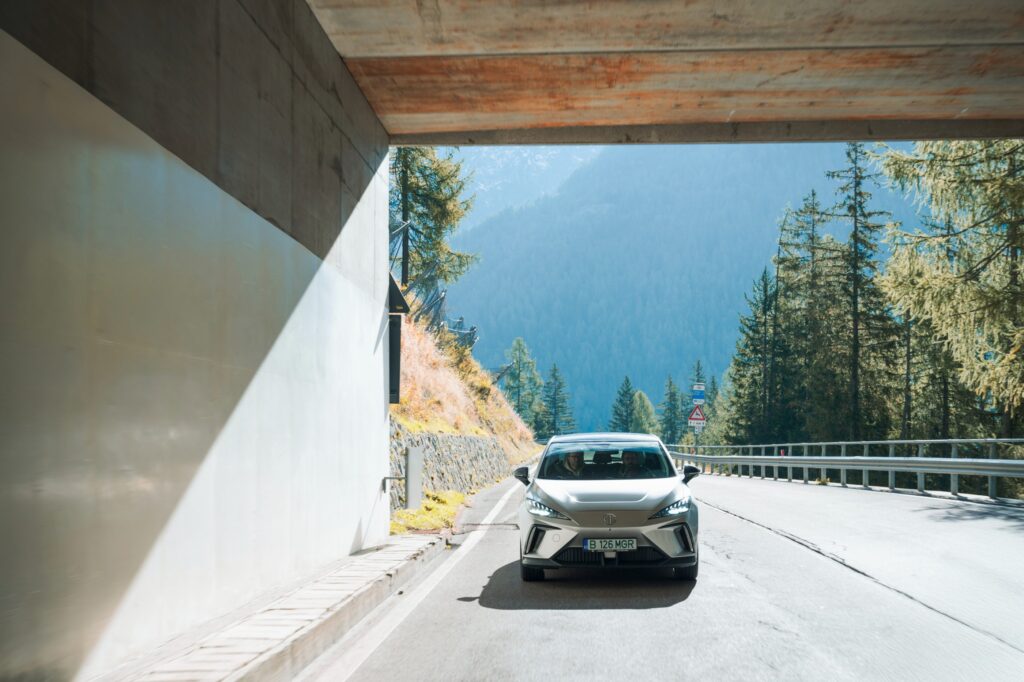
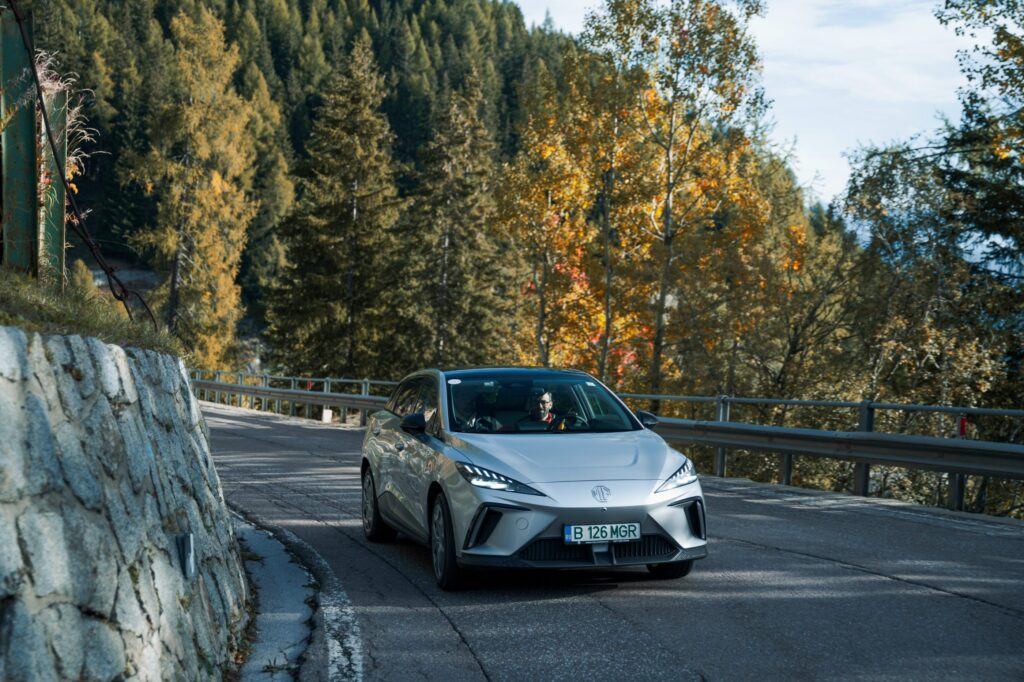
Dan Scarlat (TopGear Romania)
The MG4 is the most compact (under 4.3 m long) and lightest (1,751 kg) car on our tour, making it also the most recommendable for the average urban customer, as it is the easiest to park/maneuver through the crowds often found in big cities.
What’s more, the present 245bhp rear-wheel drive version (or ‘rear-wheel drive’, if you’re not fussy with the wording) has hot hatch acceleration and very dynamic handling, which makes it great fun to drive on twisty back roads.
The bodywork has a monovolumic look, which helps the interior space on offer. The overall design is quite simple, but the car makes up for it with interesting details such as the sharp headlamps or the sharply contoured rear end with bright zigzags above the light clusters and a two-segment roof spoiler.
Disadvantages include a top load speed of 140 kW, one of the lowest in the group (along with the Ford Explorer), relatively high fuel consumption at highway speeds (which also affects the range in this type of mode), and above all the infotainment system, which requires some getting used to and does not react very promptly to the operator’s commands. Also, for some reason that escapes me, the Chinese equate a temperature of 22 degrees Celsius, which is normal for us Europeans in a car, with a value of around 26 degrees Celsius on the climate control display.
On the other hand, the MG4 is, even in this well-equipped version, the cheapest car on the tour. The €41,000-plus price of the Exclusive Long Range version is €10,000 more than the base model called Explore, equipped with a 177 hp engine and 51 kWh gross battery, which is one of the most affordable compact electric cars in Romania.



Gabriel Nica (Cu și despre mașini)
The ugly, reliable duckling. That’s how you might characterize the MG4. Of all the models lined up to start the #eurocharge, the MG4 is perhaps the most unpolished of the unmistakable. And understandably so, especially given the price.
Yes, the Chinese model is the most affordable here and it shows in places, especially the interior, where some materials could be better and the multimedia system looks a bit dated. Even so, the MG4’s motto could be “utility over niceties”. Why? Because despite these minor shortcomings, and a slightly confusing exterior design (what is it? a hatch? a crossover?) the little duckling has proven to be extremely reliable.
Range estimates were accurate, and tailored to fuel consumption and conditions, charging was quick and predictable, and seat and suspension comfort were up to the task. Basically, little to fault unless you start splitting hairs.
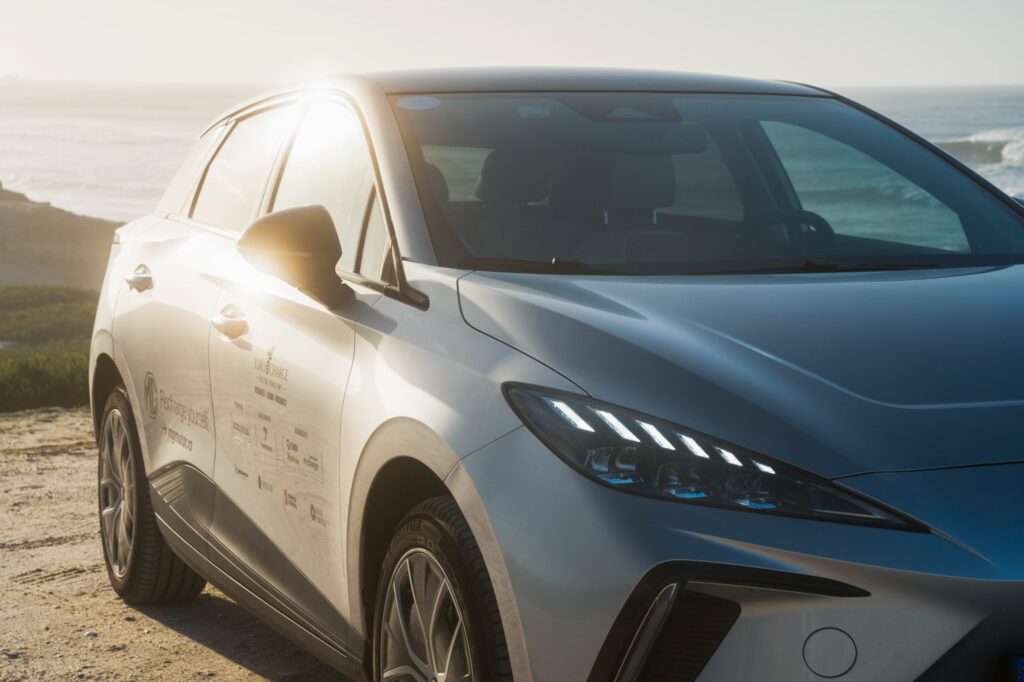
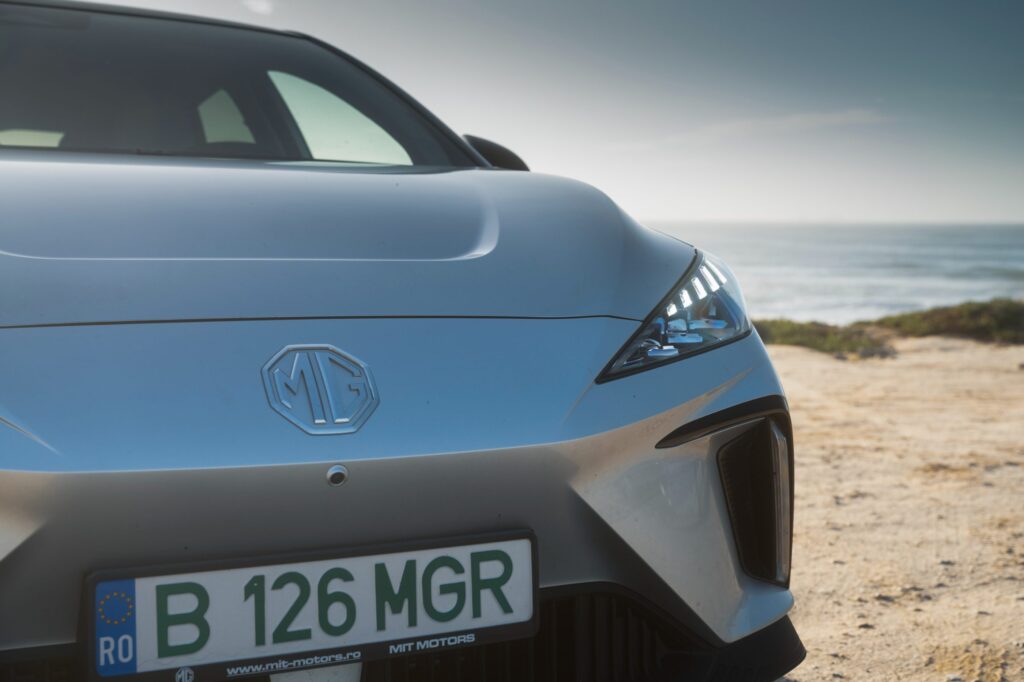
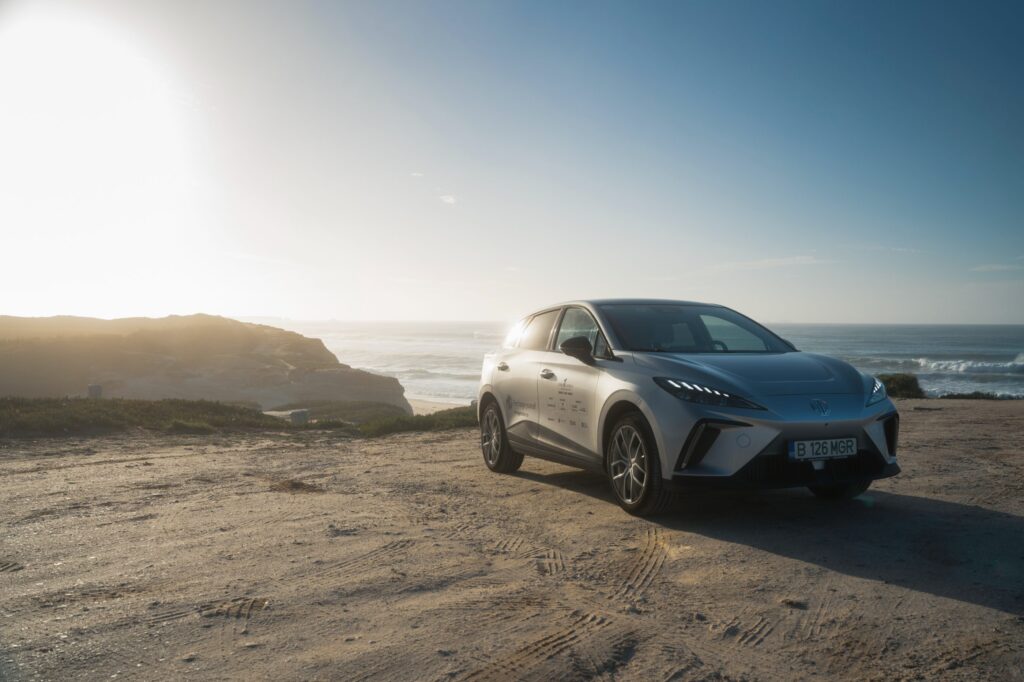
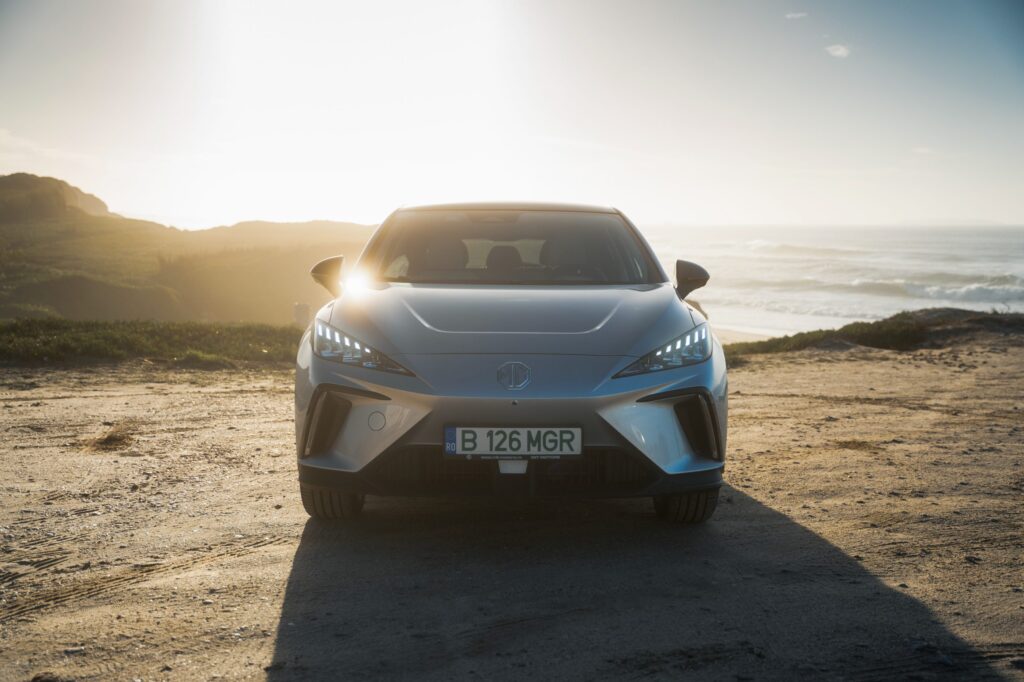
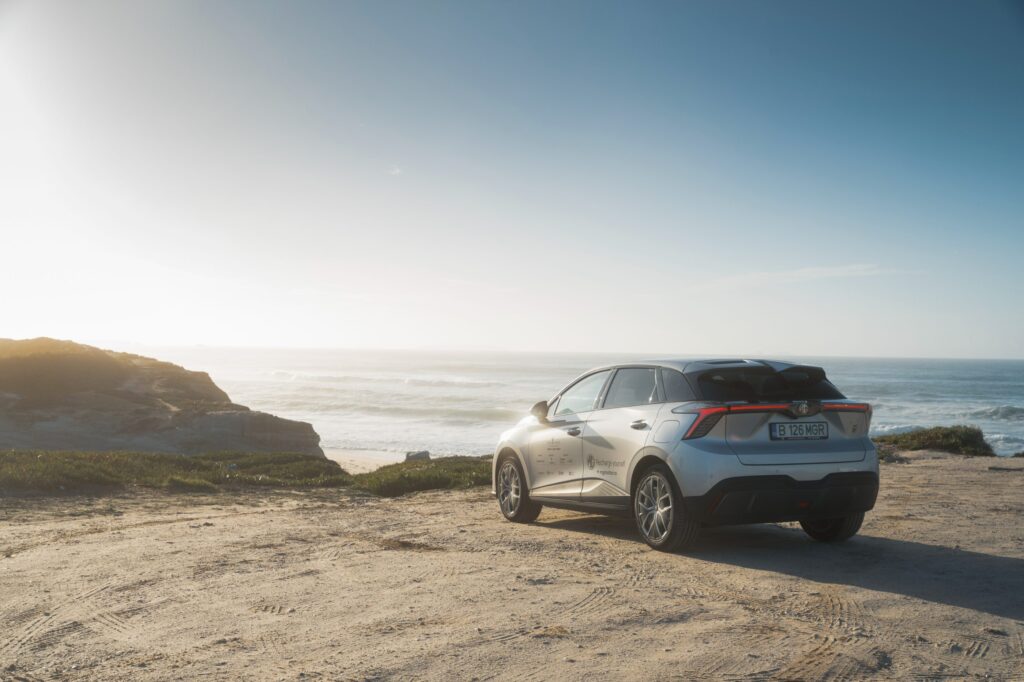
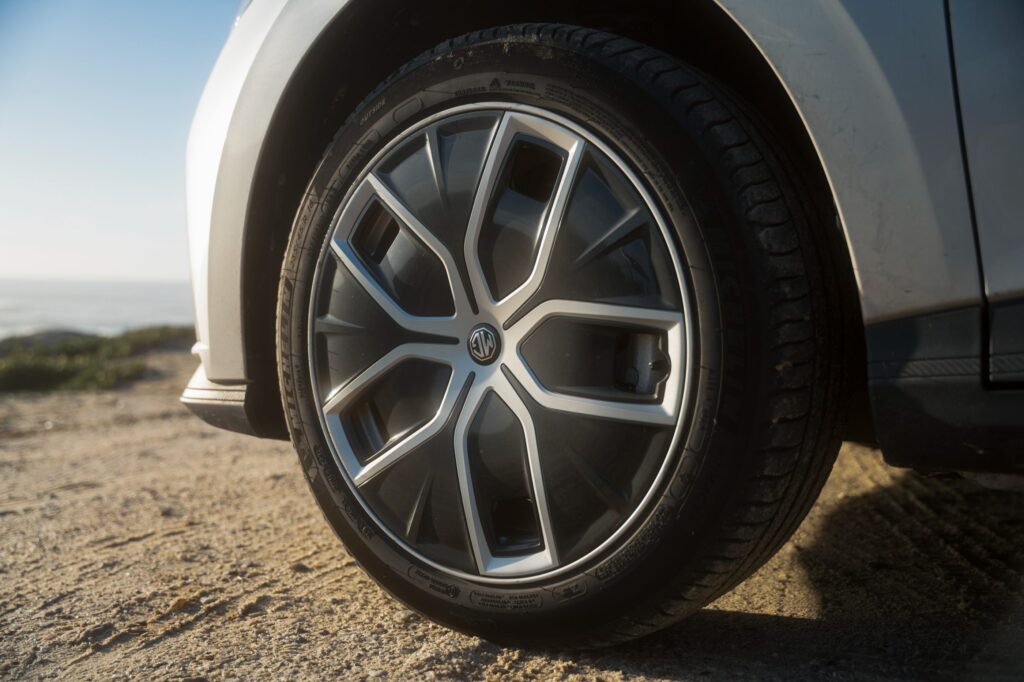
Adi Dima (eblogauto)
A lot of things can be said about the MG4, but no one can say it’s an expensive car, given the other models in the EUROCHARGE 2024. With a price tag that barely passes the €40,000 mark, the MG is the least expensive, but also the least suitable for long trips. Soundproofing and trim become elements you get used to and tolerate when spending long stretches in this model, and the range is the poorest of the cars on this tour.
As a roomy city car, the MG4 is excellent, but as an electric car you’d venture across Europe in, the Ioniq 6, which is just €4,000 away, is a more efficient, more fun to drive and with slightly better finishes.
I think for those who are severely limited by budget, the MG4 is a solution, but for those who are willing to put a little more money or accept a city car with less interior space, the British manufacturer’s MG4 is no longer the best choice.
The downside is that the Chinese factory has full confidence in its products, so you get a 7-year warranty.

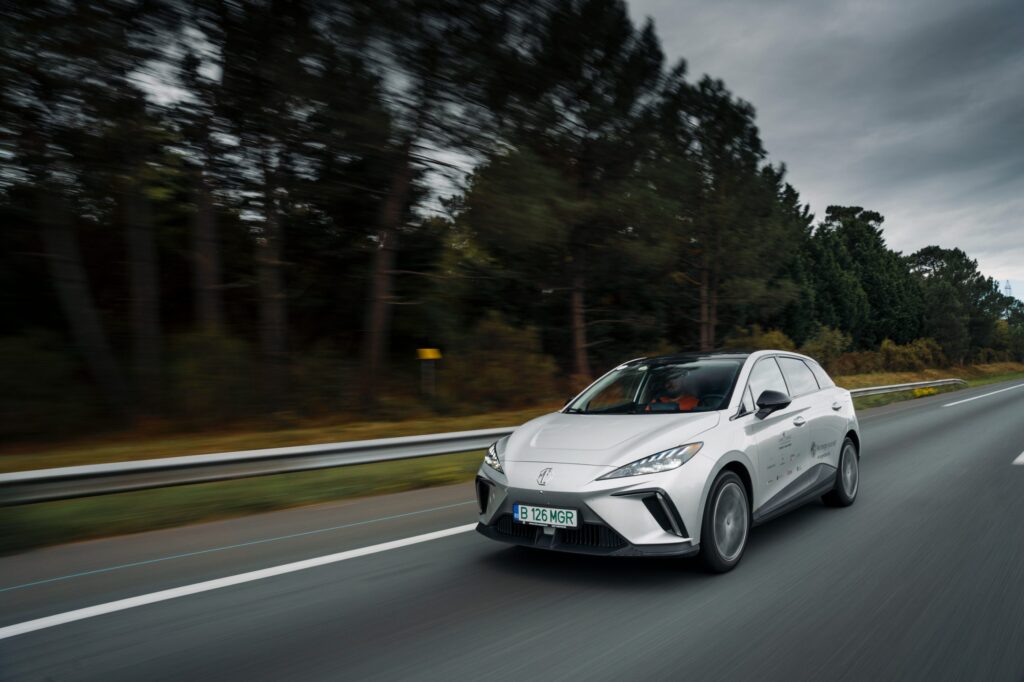
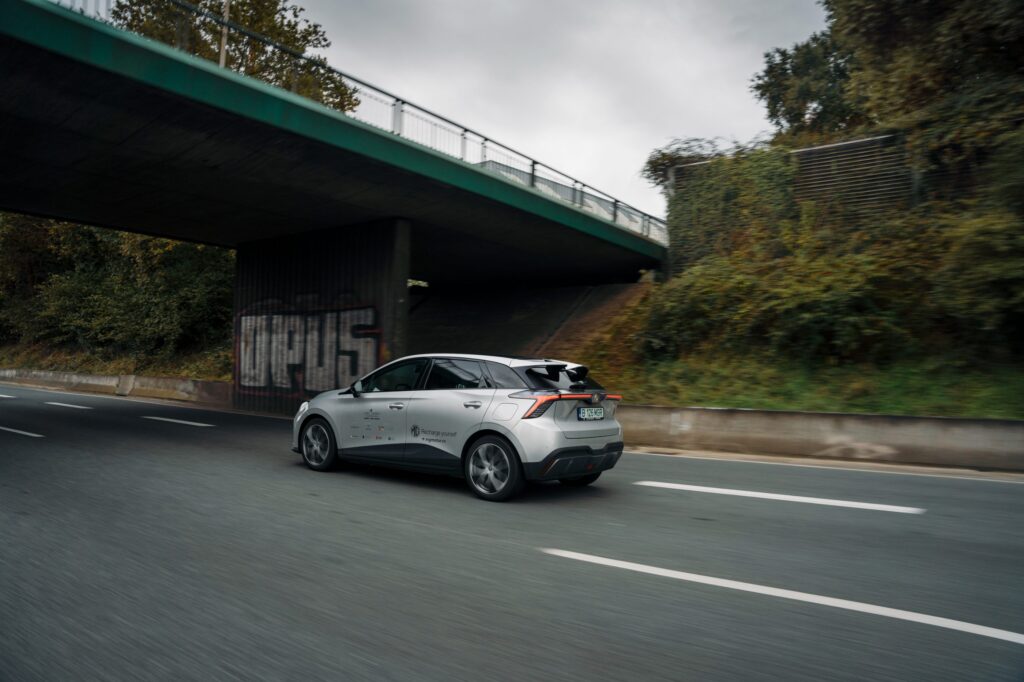
Adrian Mitrea (0-100.ro)
The MG4 pleasantly surprised me every time in EUROCHARGE by Schaeffler. Just the things that interest people are just right: the range indicated on the dashboard is precise and manageable, and the charging time reasonable. Around 30 minutes for 10-80%, enough to cover about 300 km. It’s also surprisingly comfortable and roomy.
A few elements, however, are worth MG’s overhaul. One of them is the ‘sticky’ suspension, which transmits fine vibrations into the cabin, especially at high speeds. The screens in the car are too bright at night, and the USB Type A-only cell-phone connection feels last-century.
All in all it’s a reasonable car. Sort of like an Opel, but from China, with the logo of a British brand rescued from the Far East.
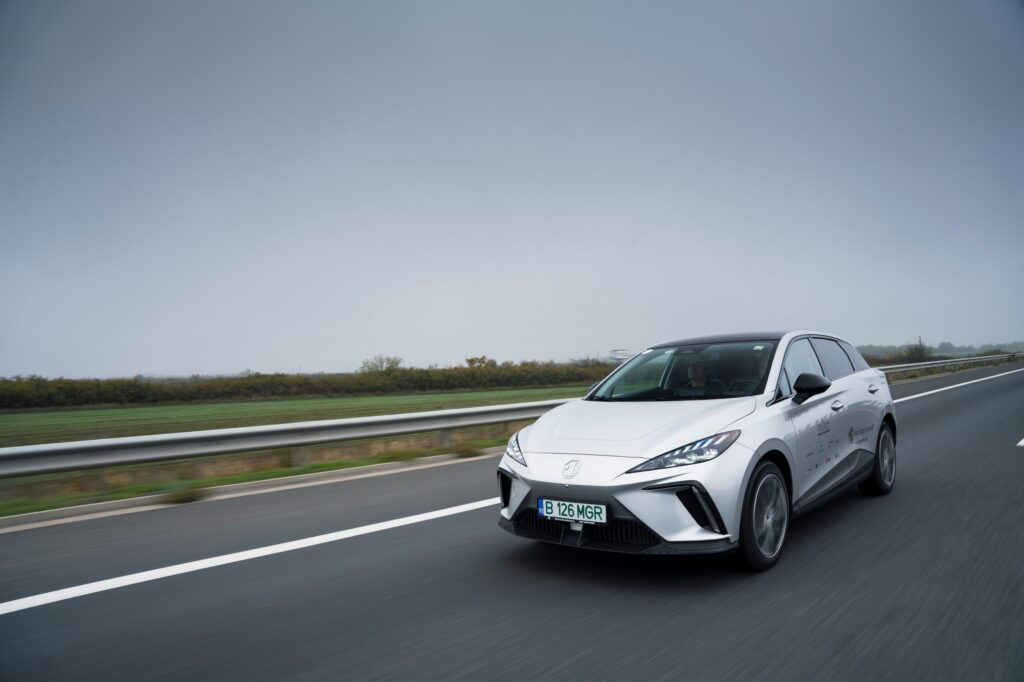
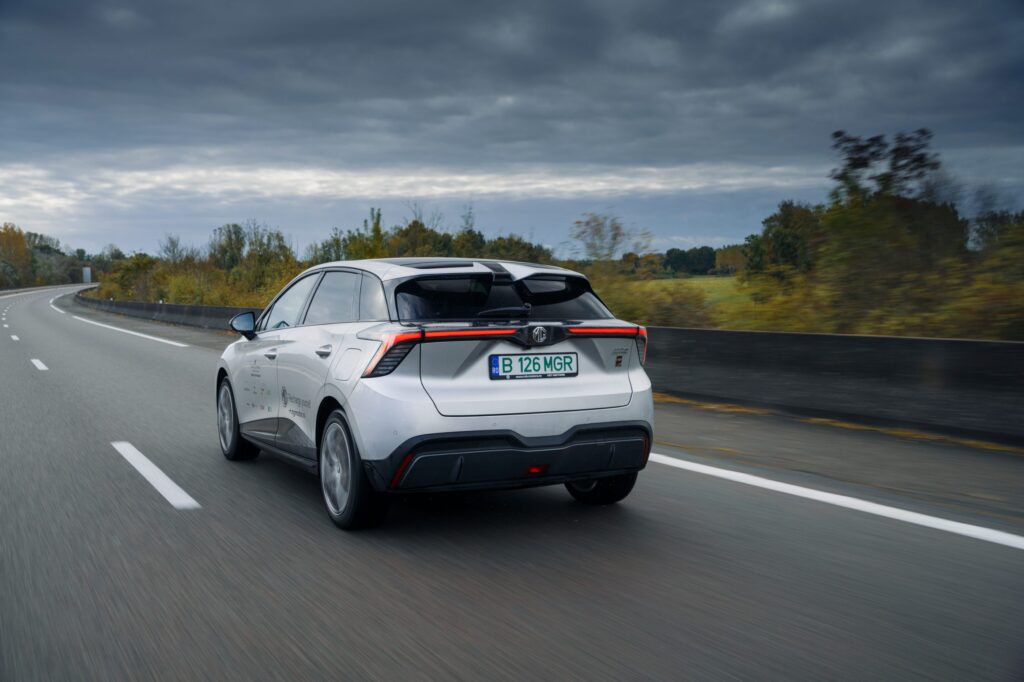
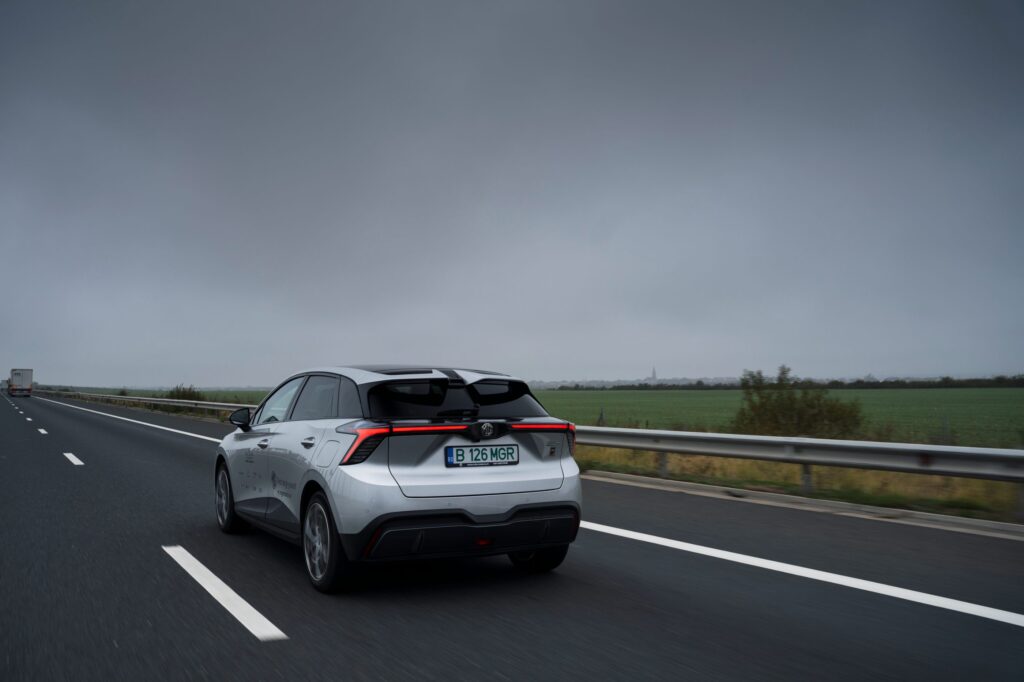
Technical specifications of the car that accompanied us in EUROCHARGE by Schaeffler
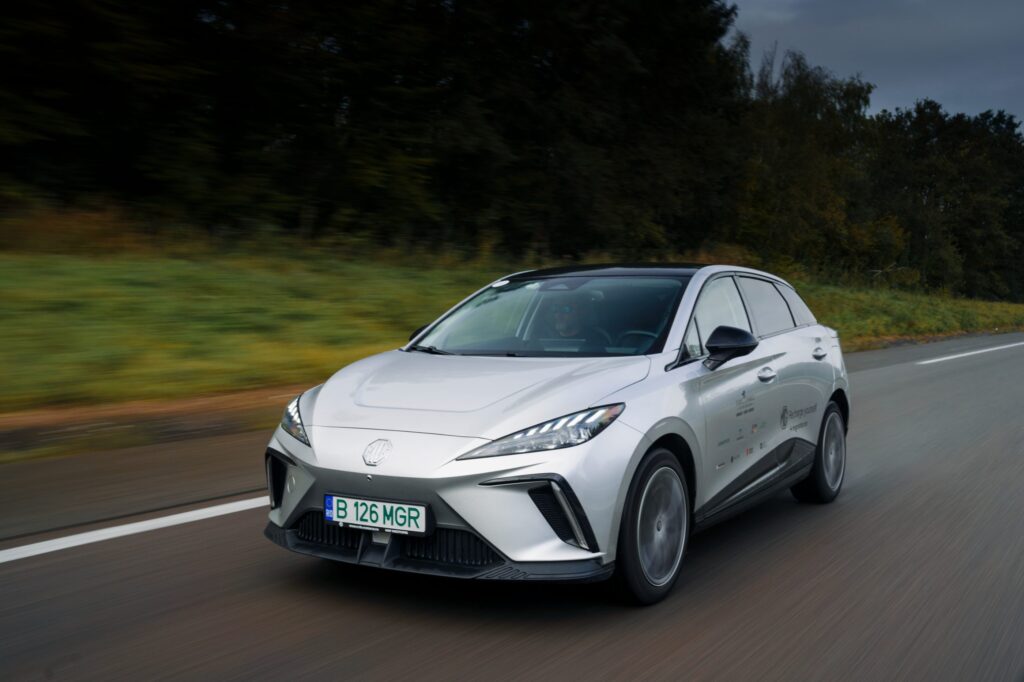
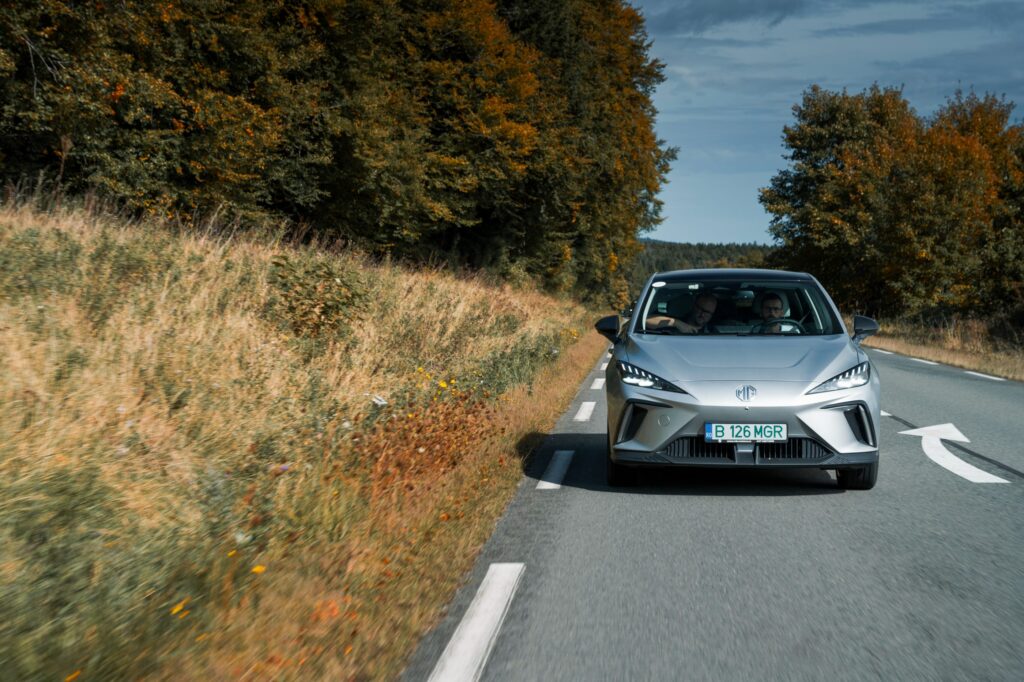
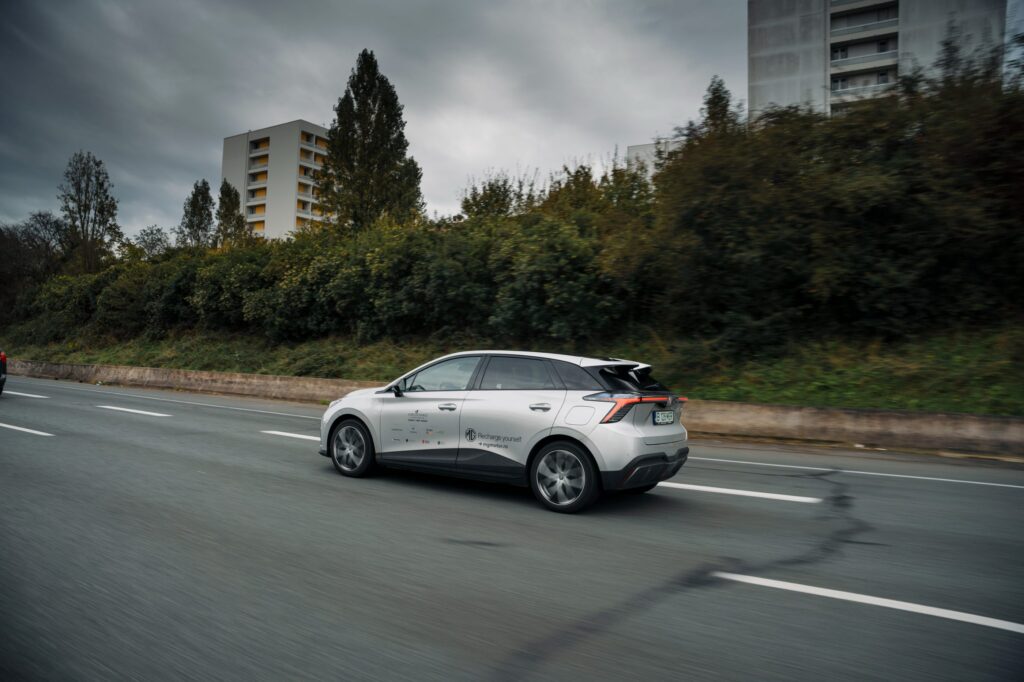
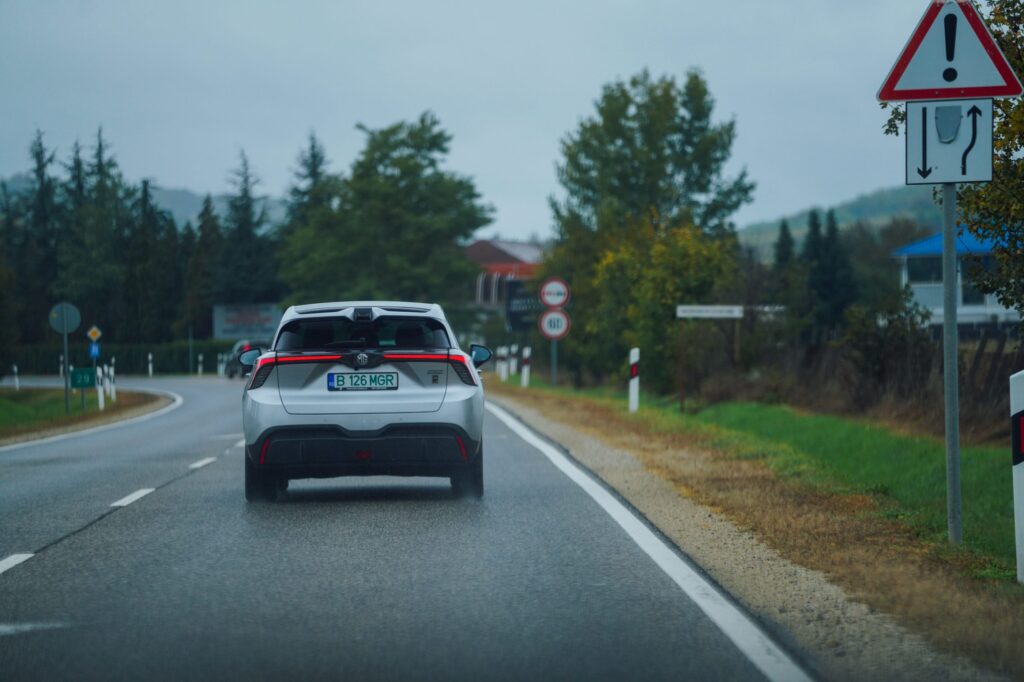
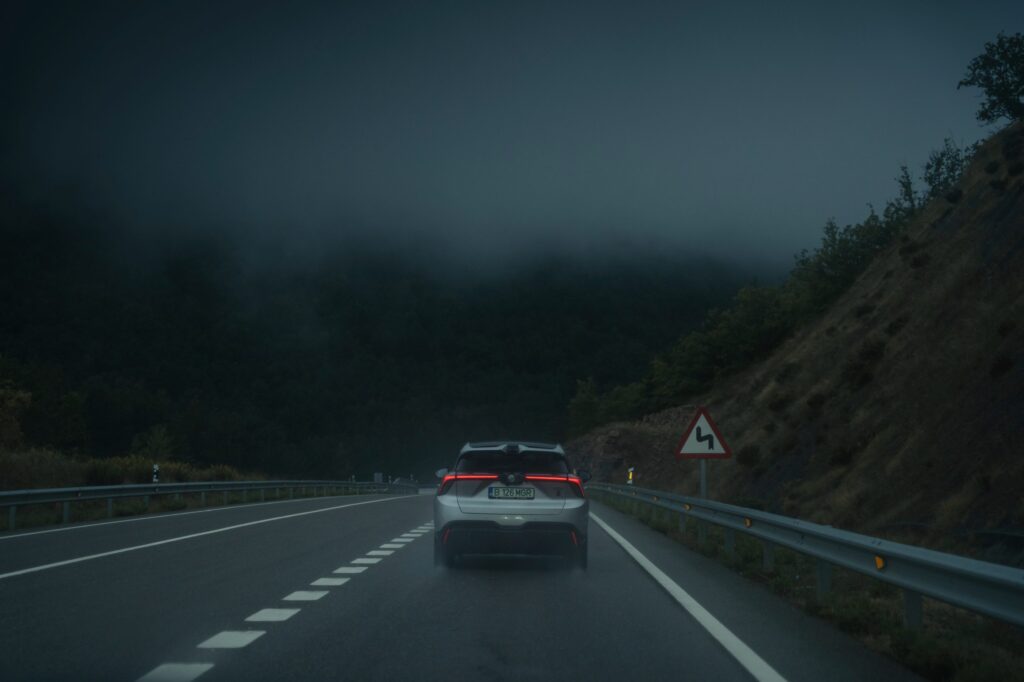
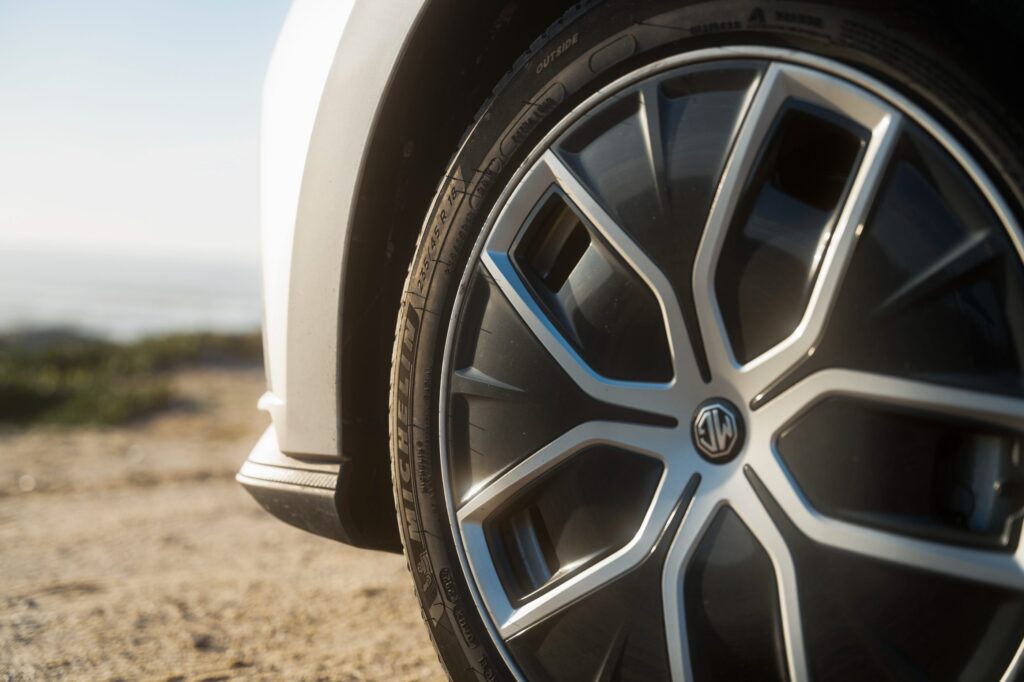
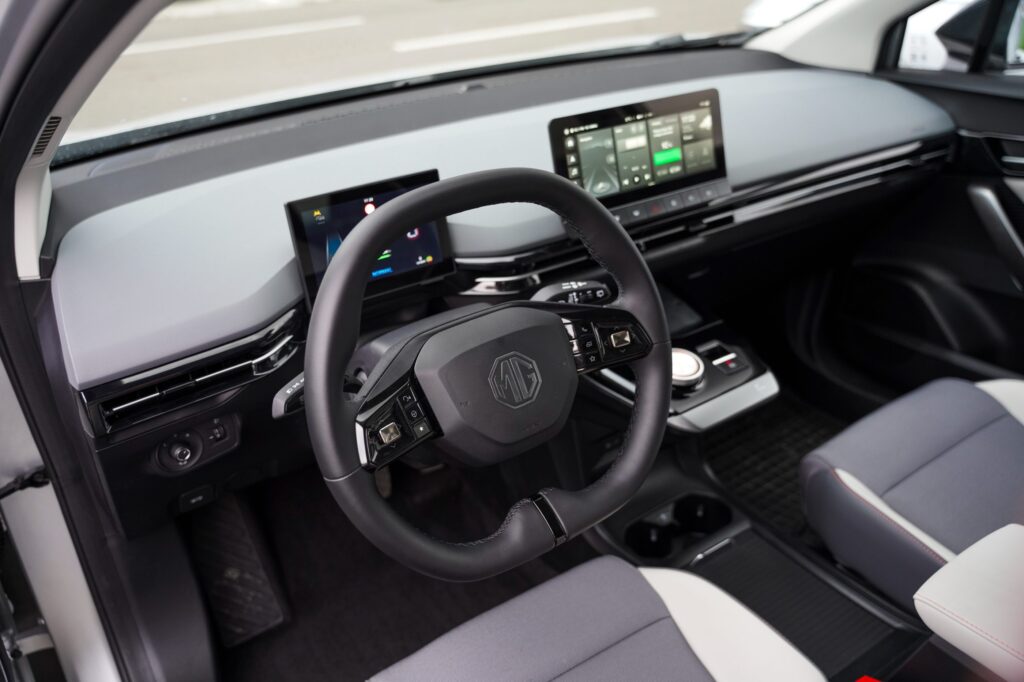
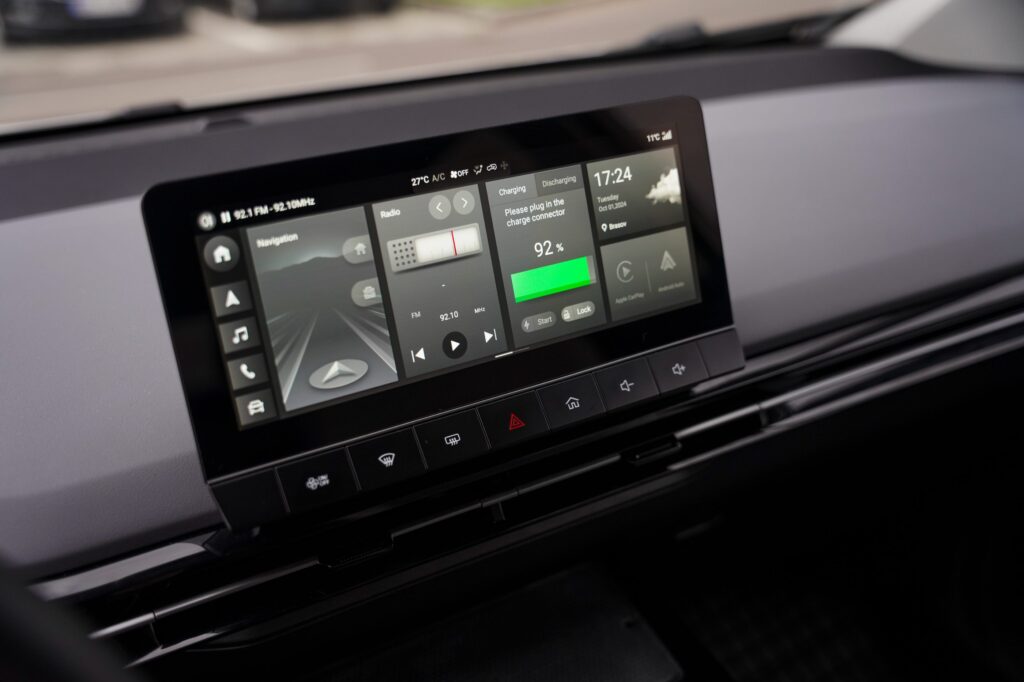
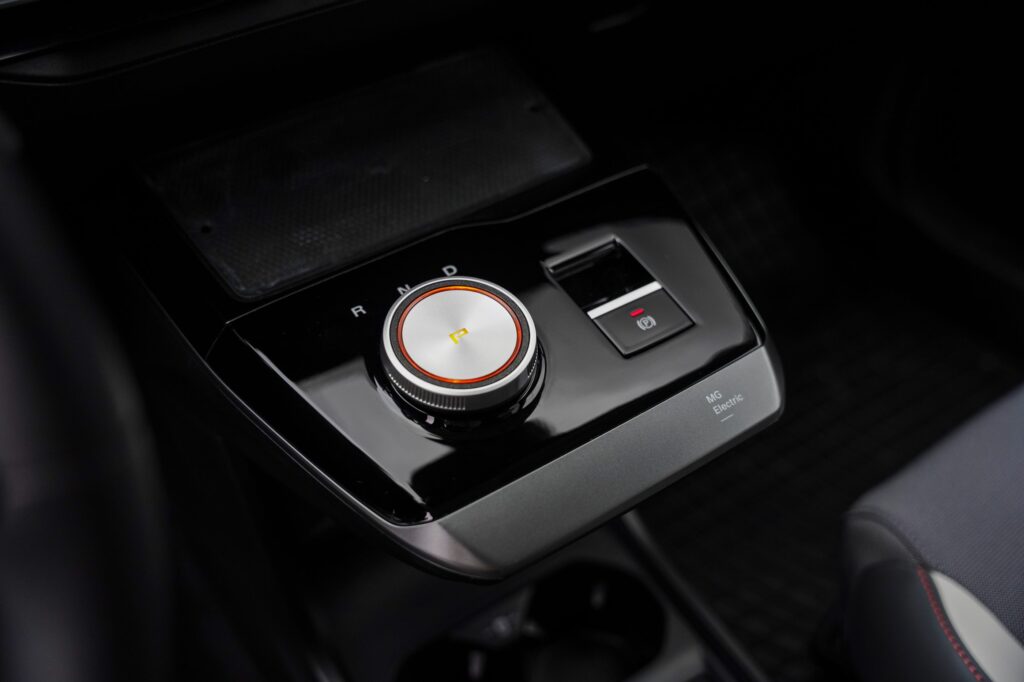
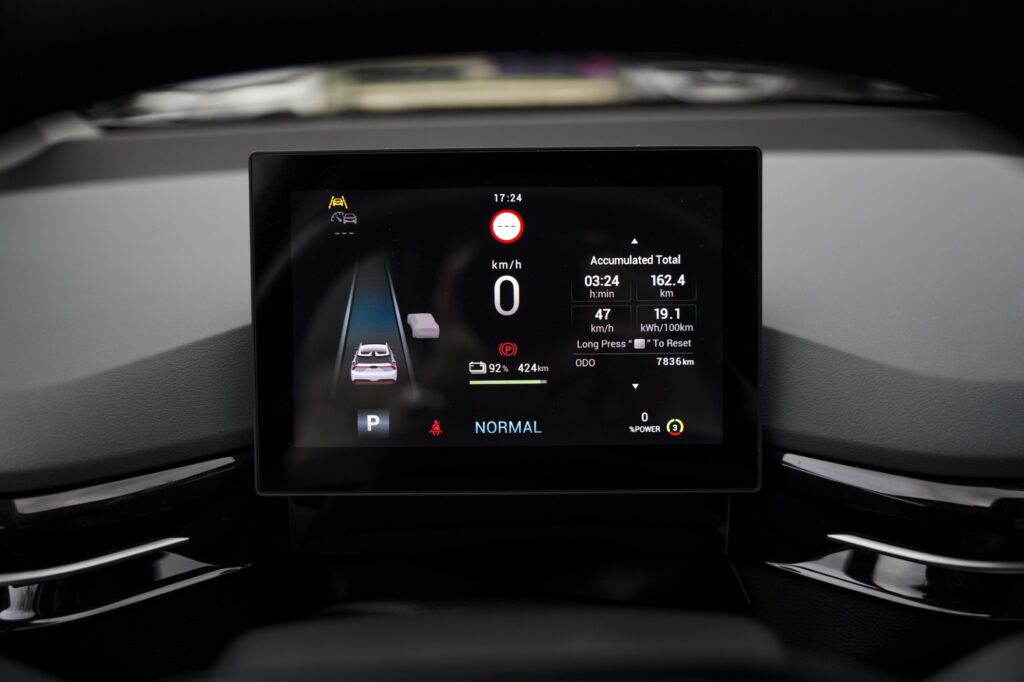


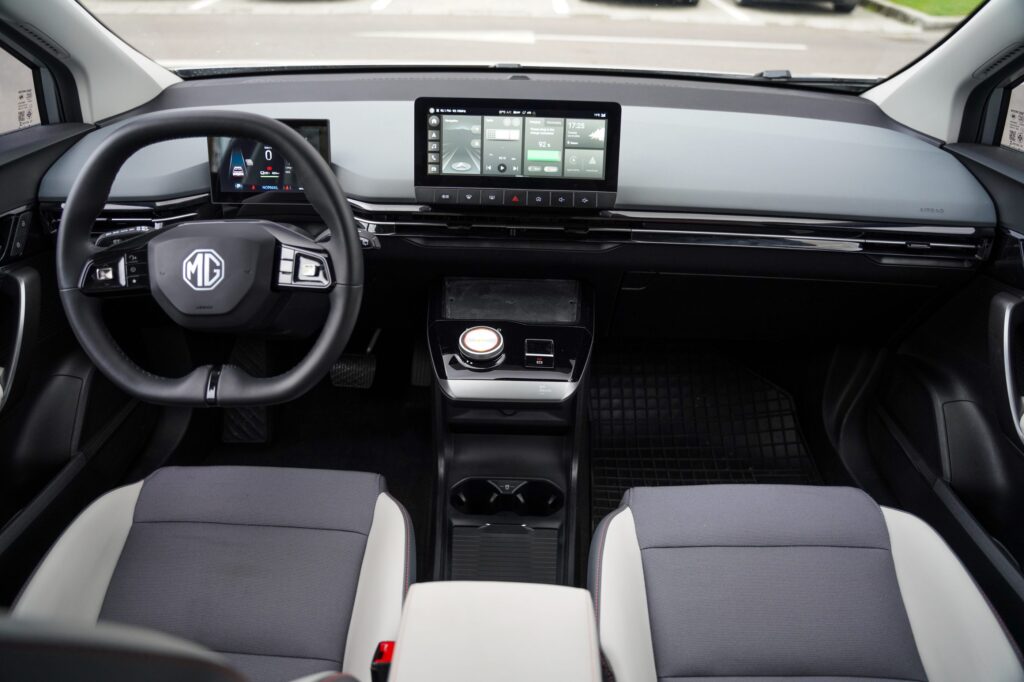
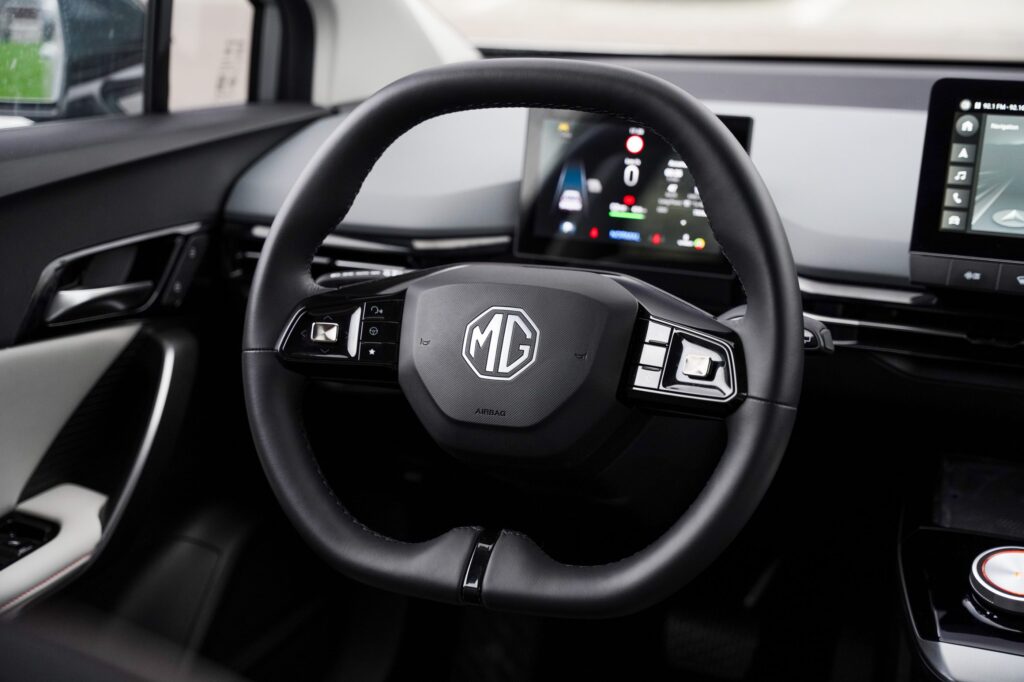

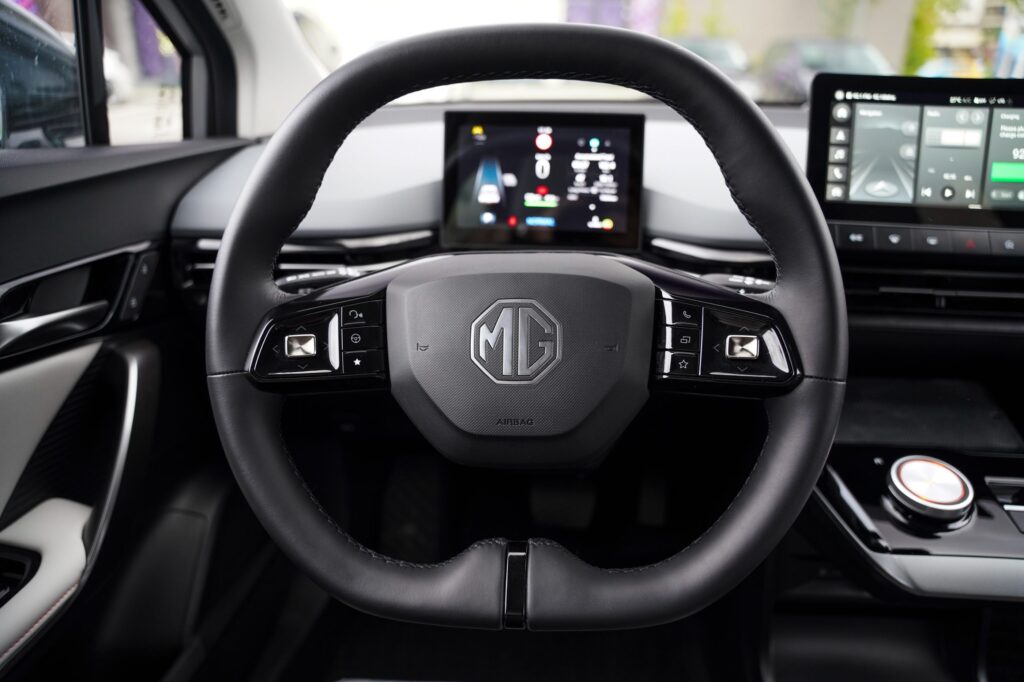
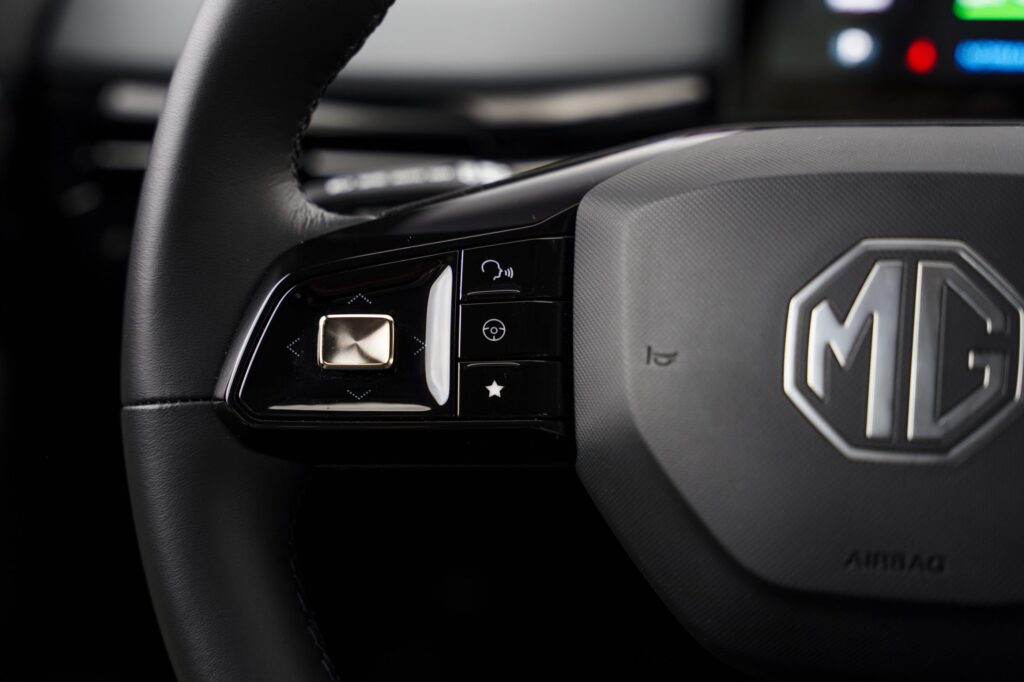
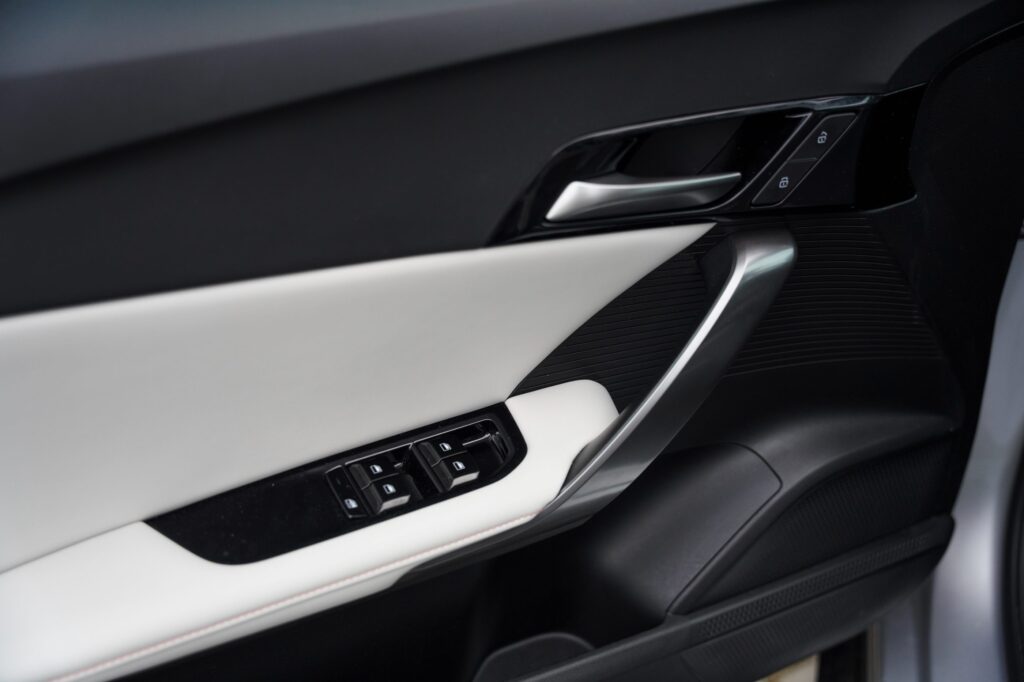
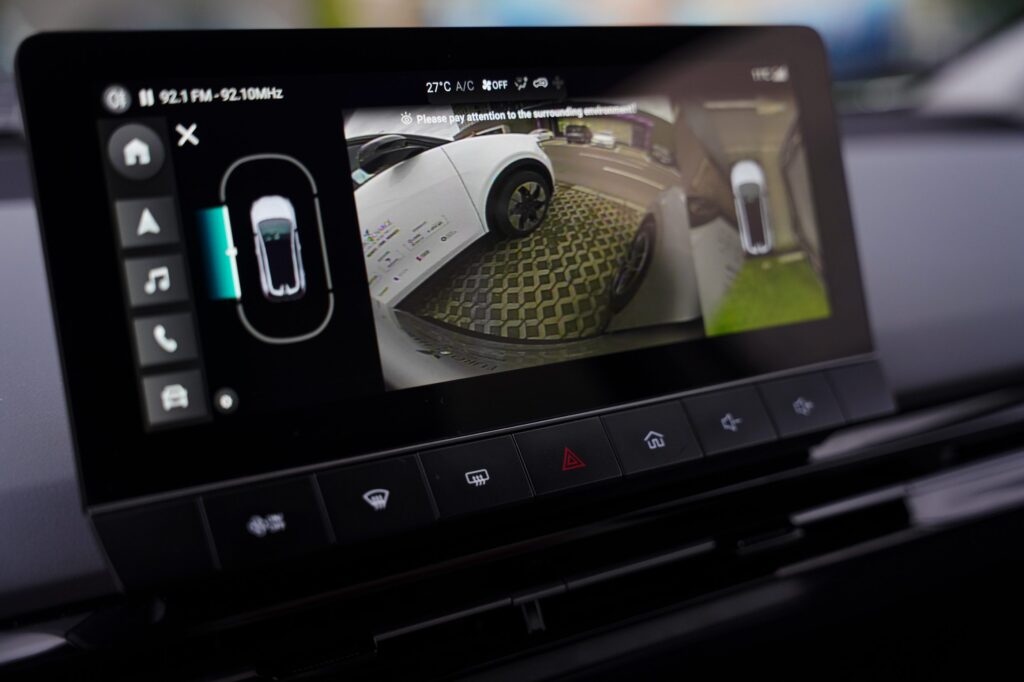
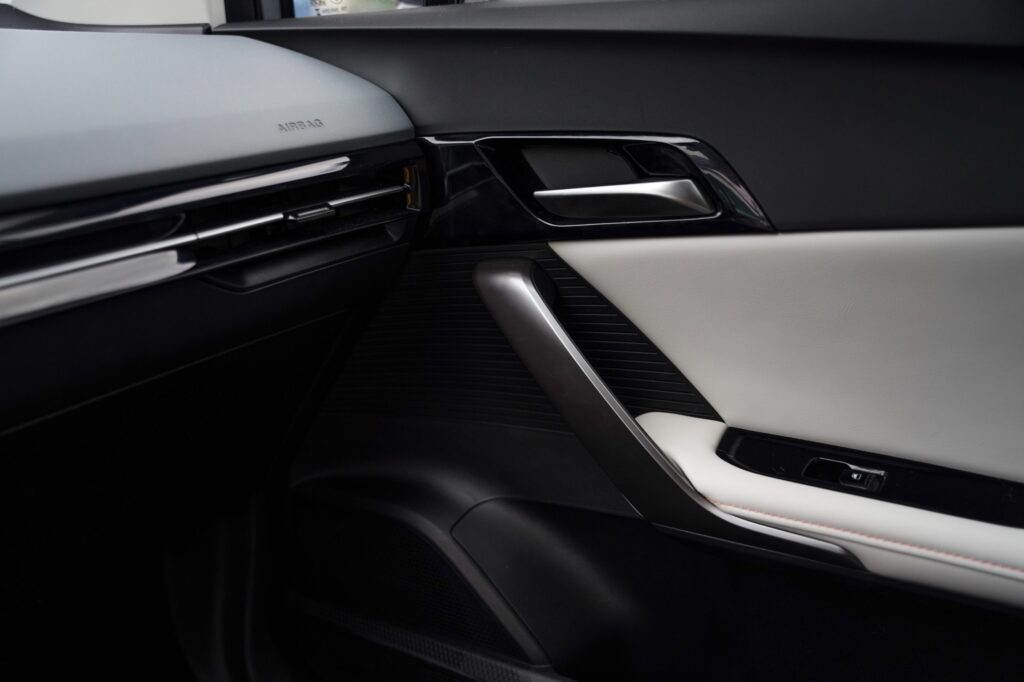
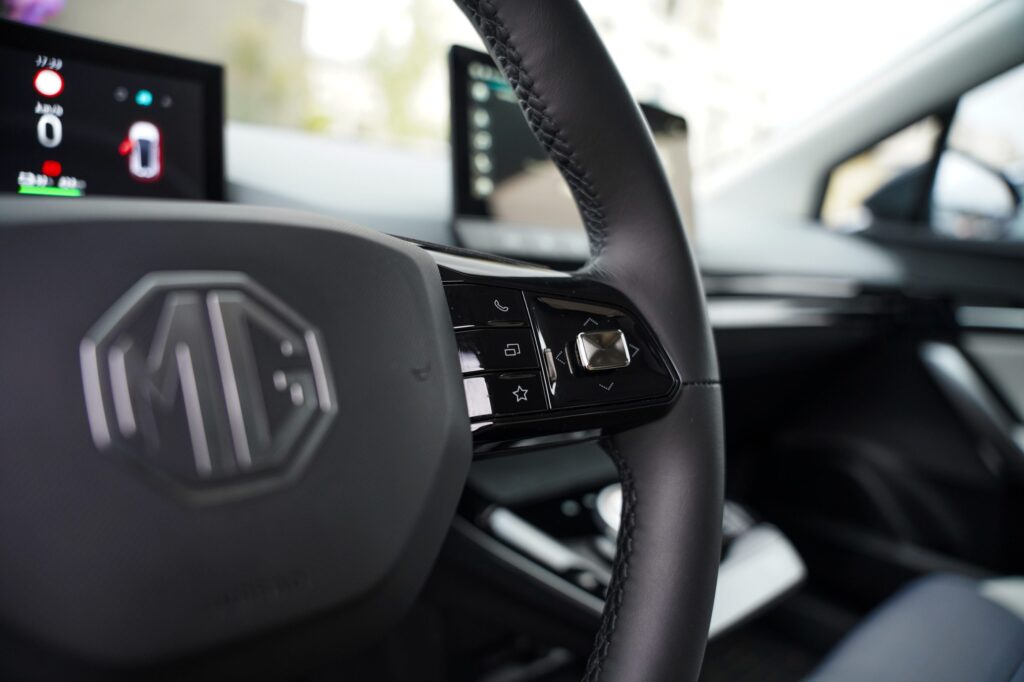
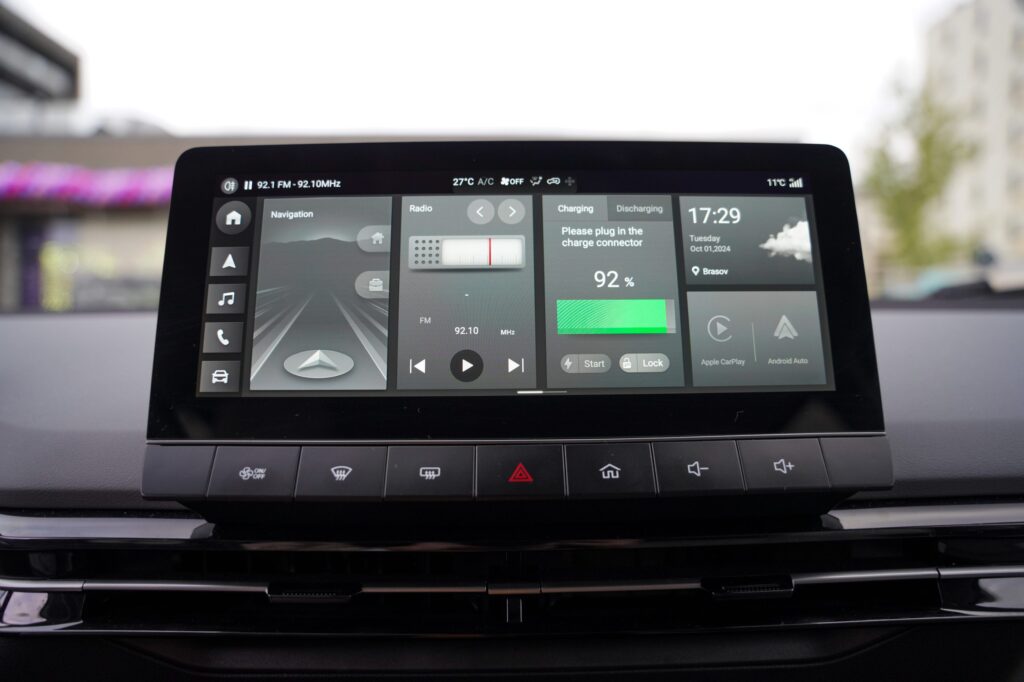
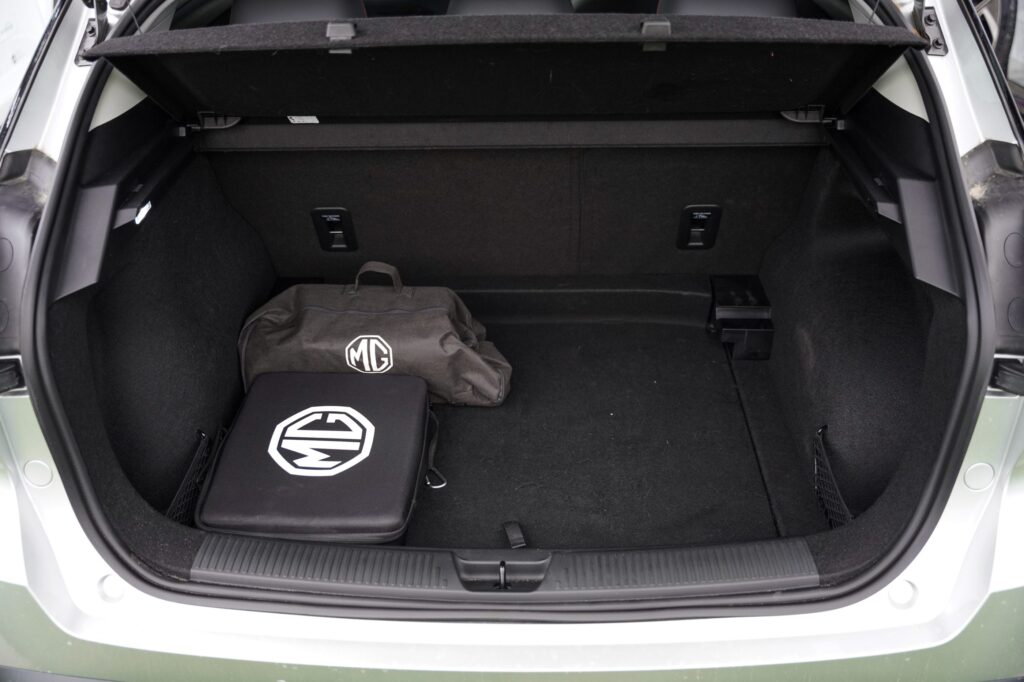
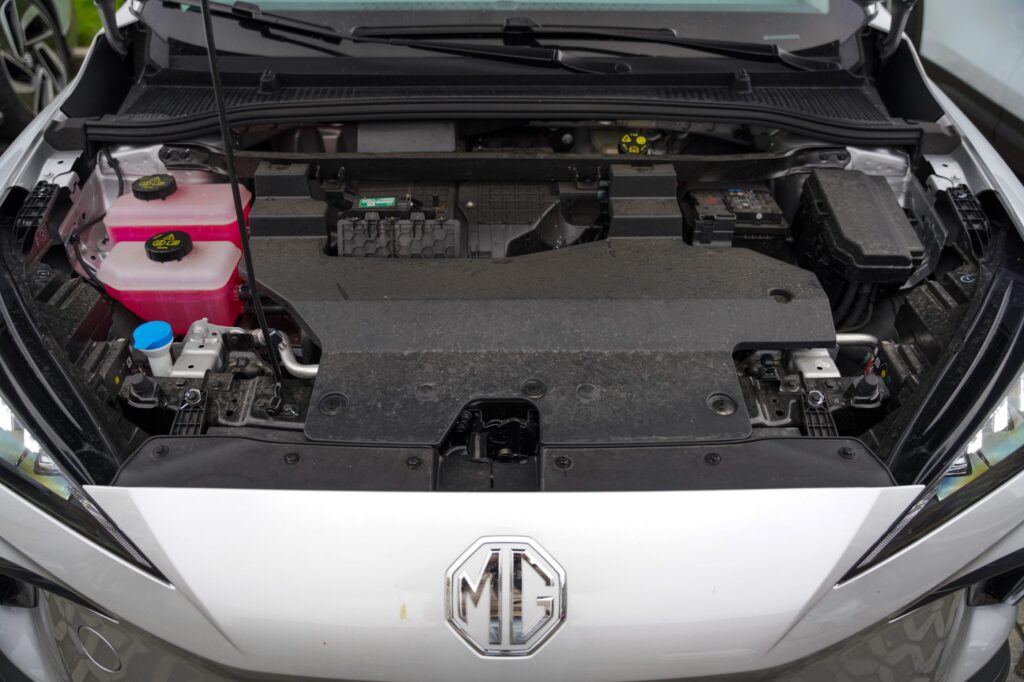

is a project backed by SCHAEFFLER
Charged by
OMV eMotion and Renovatio e-charge
Green Partner
Autonom
Charging stations
MOON România
On the road with
Michelin
Powered by
Server Config

